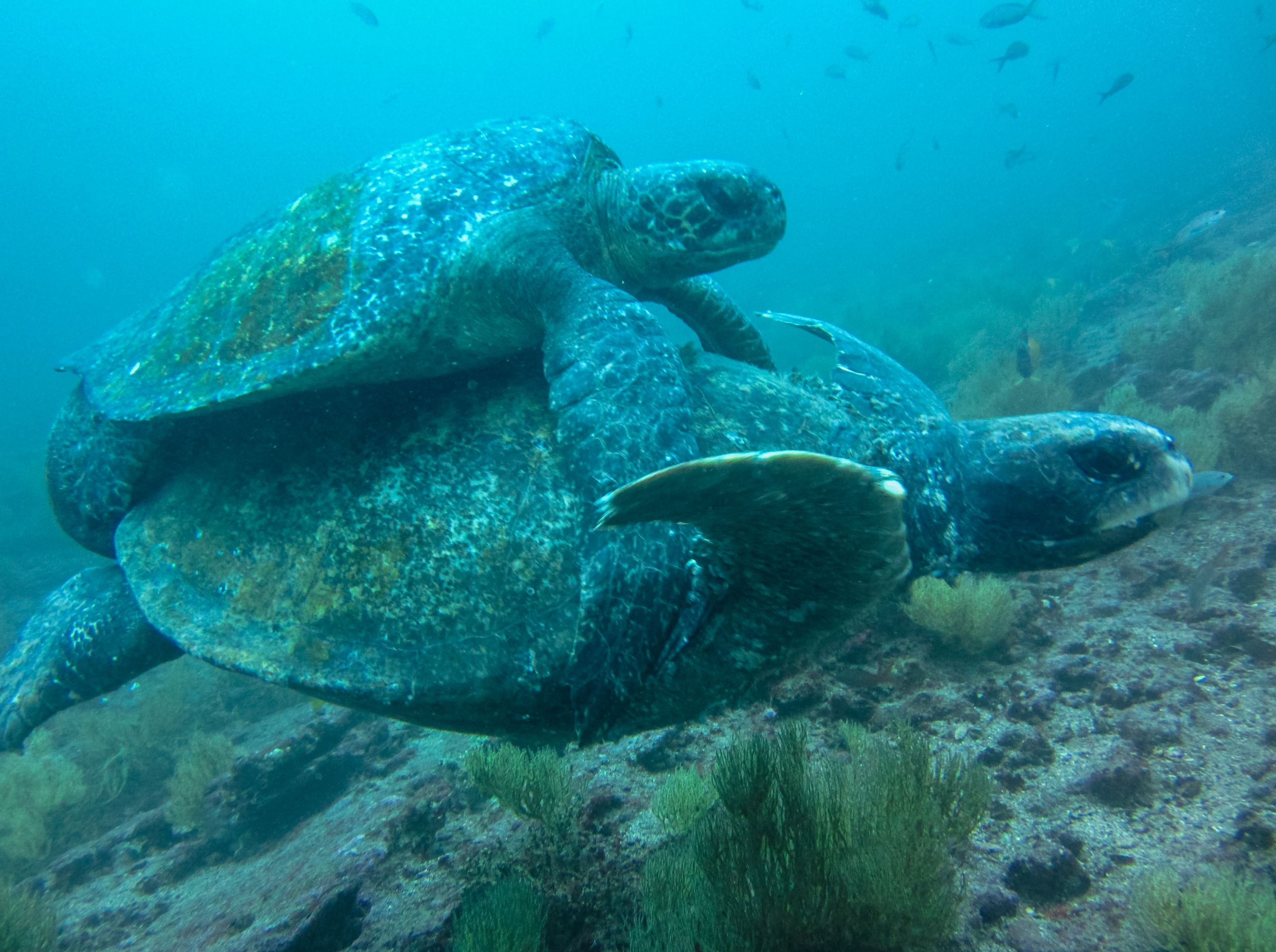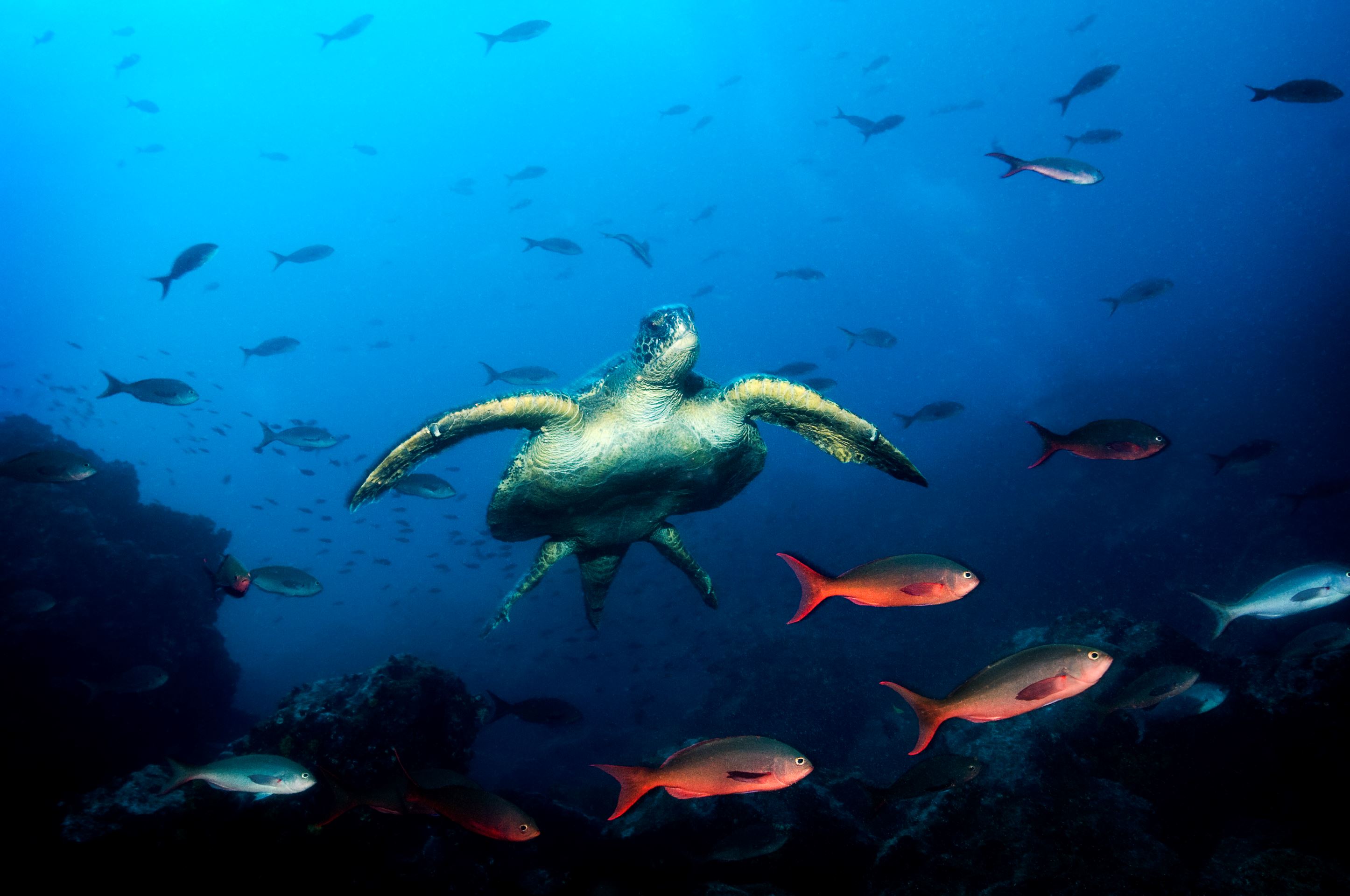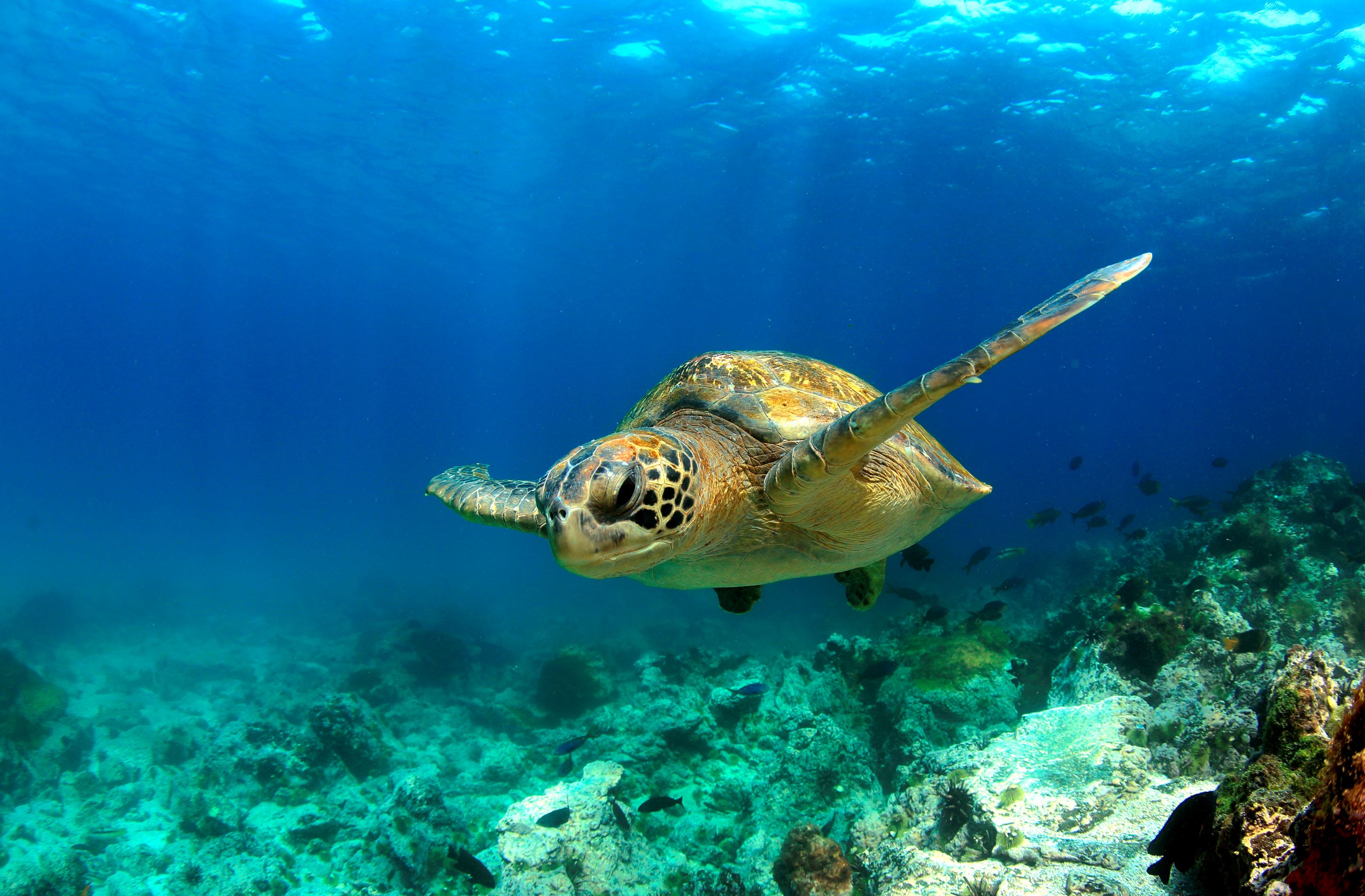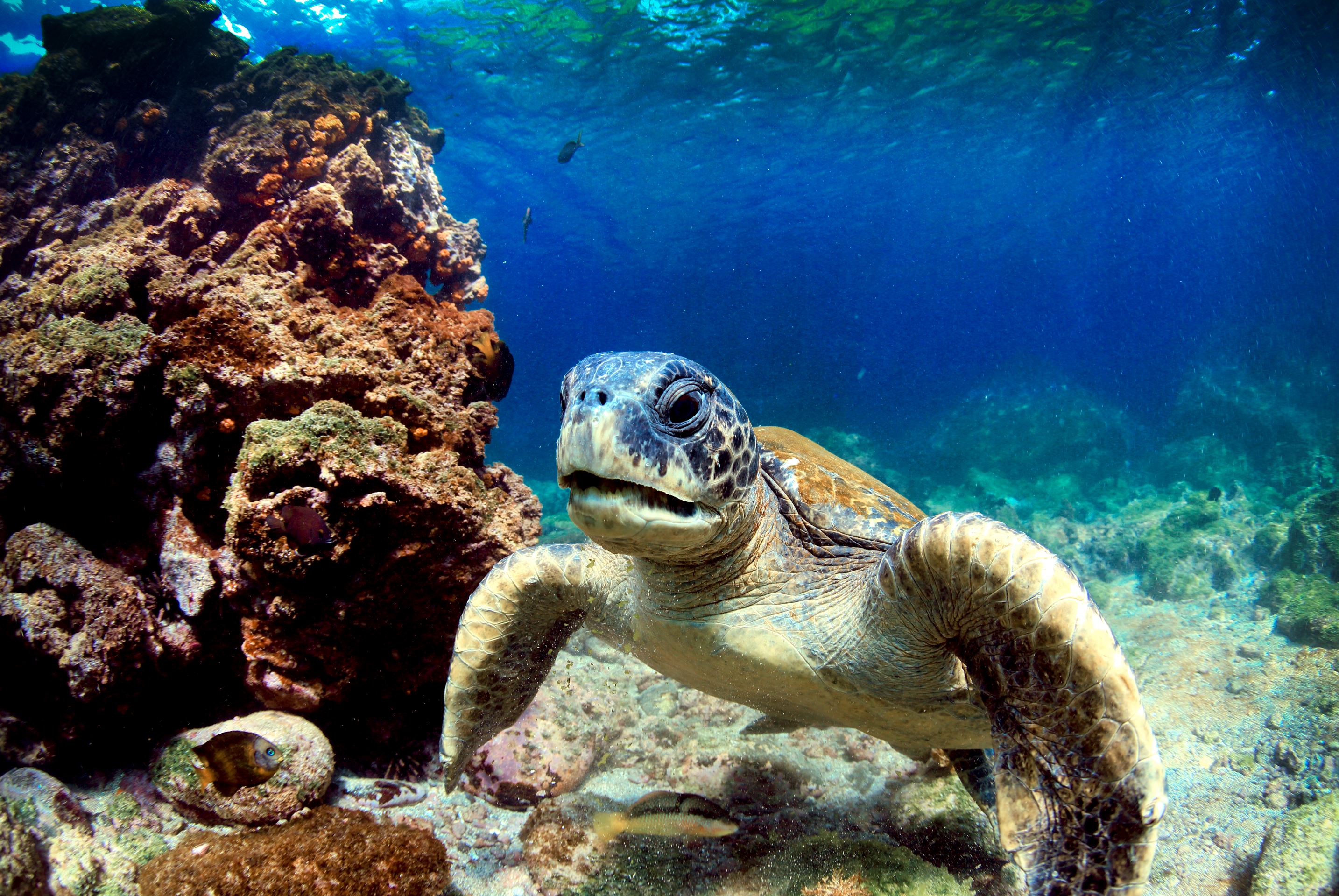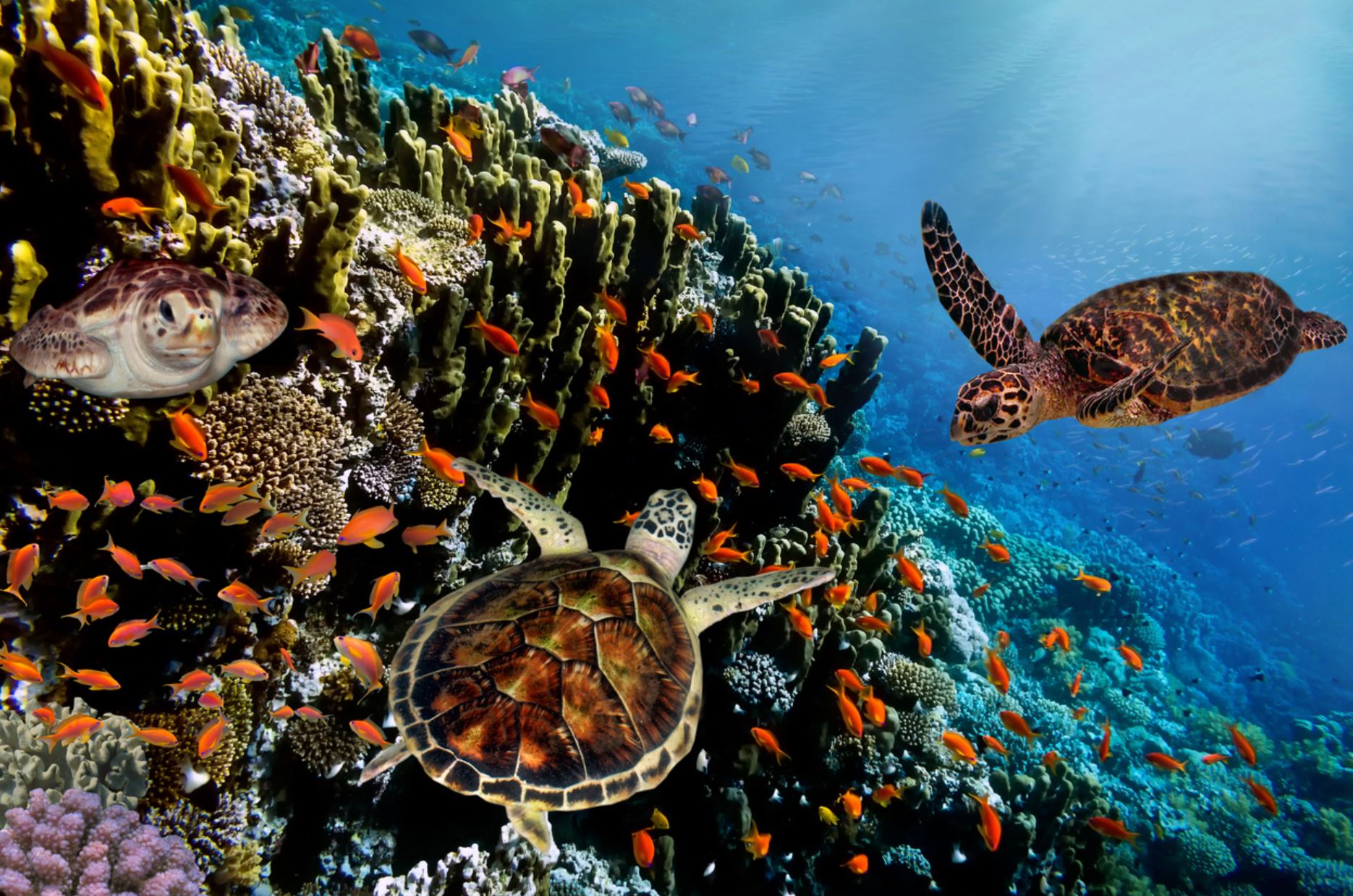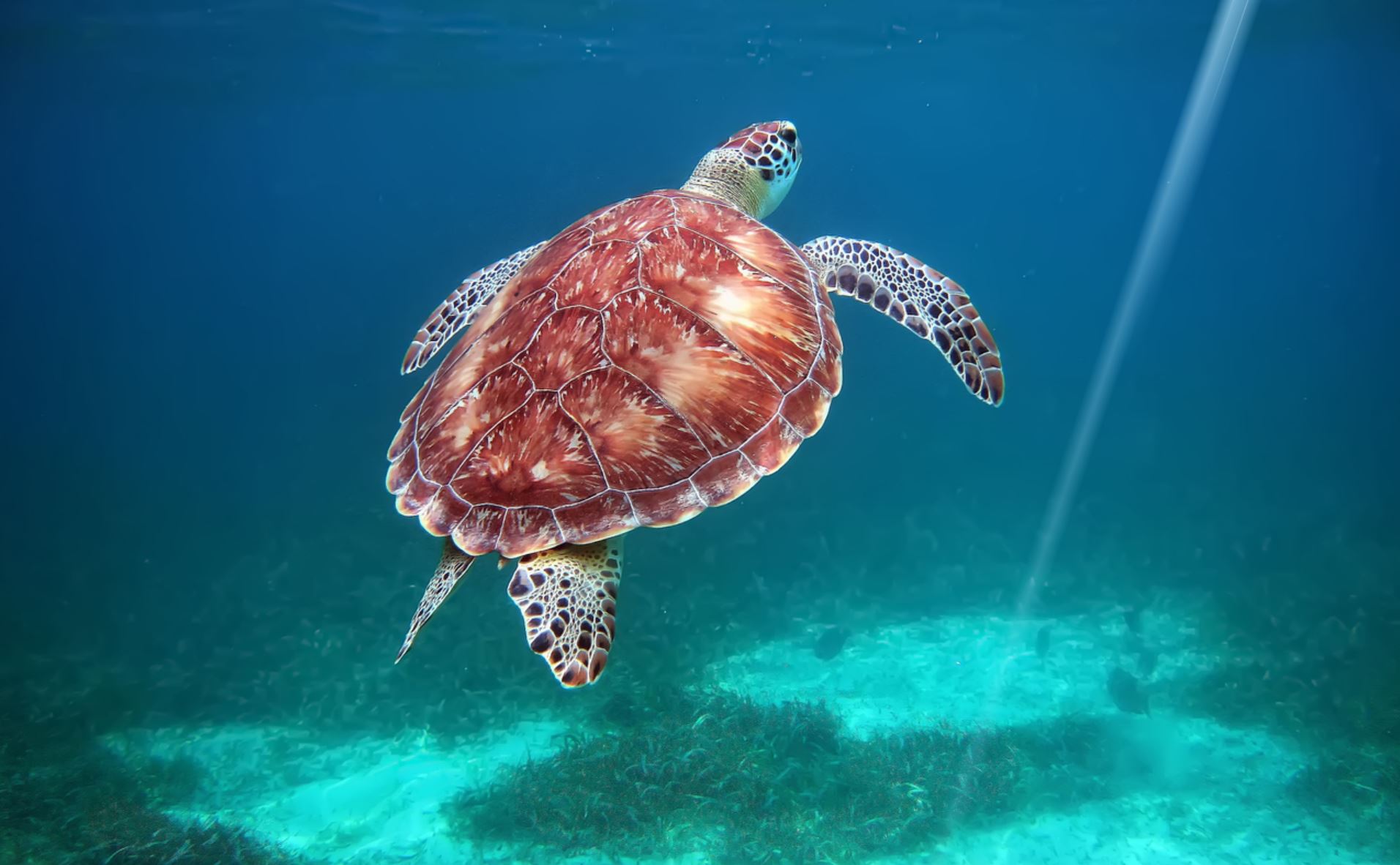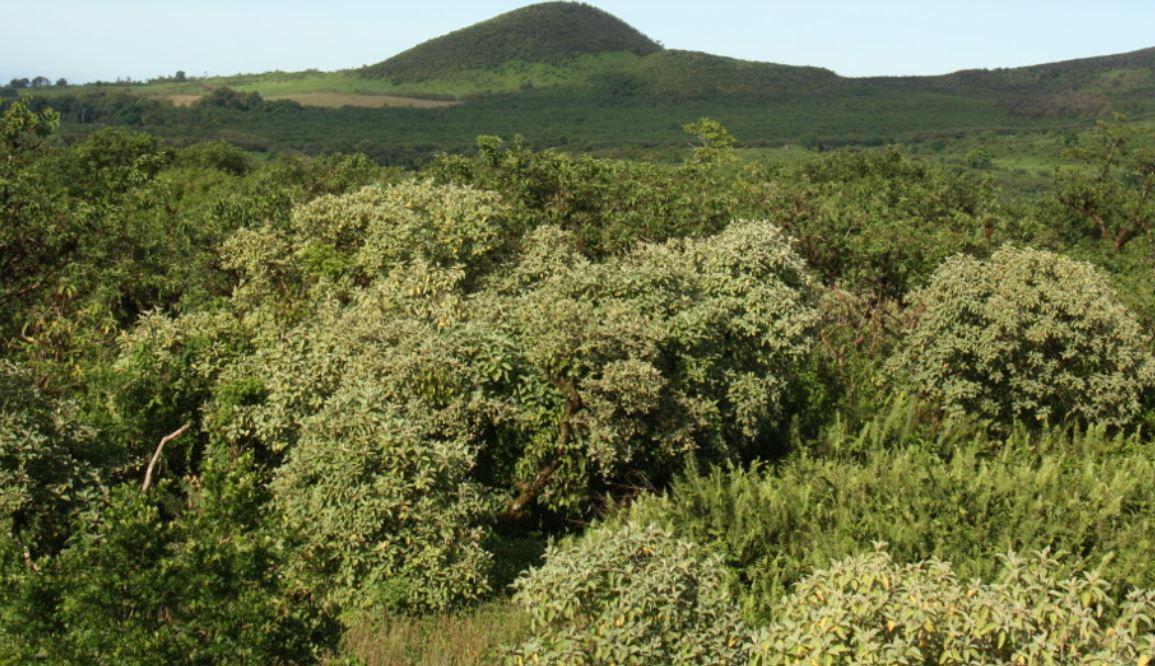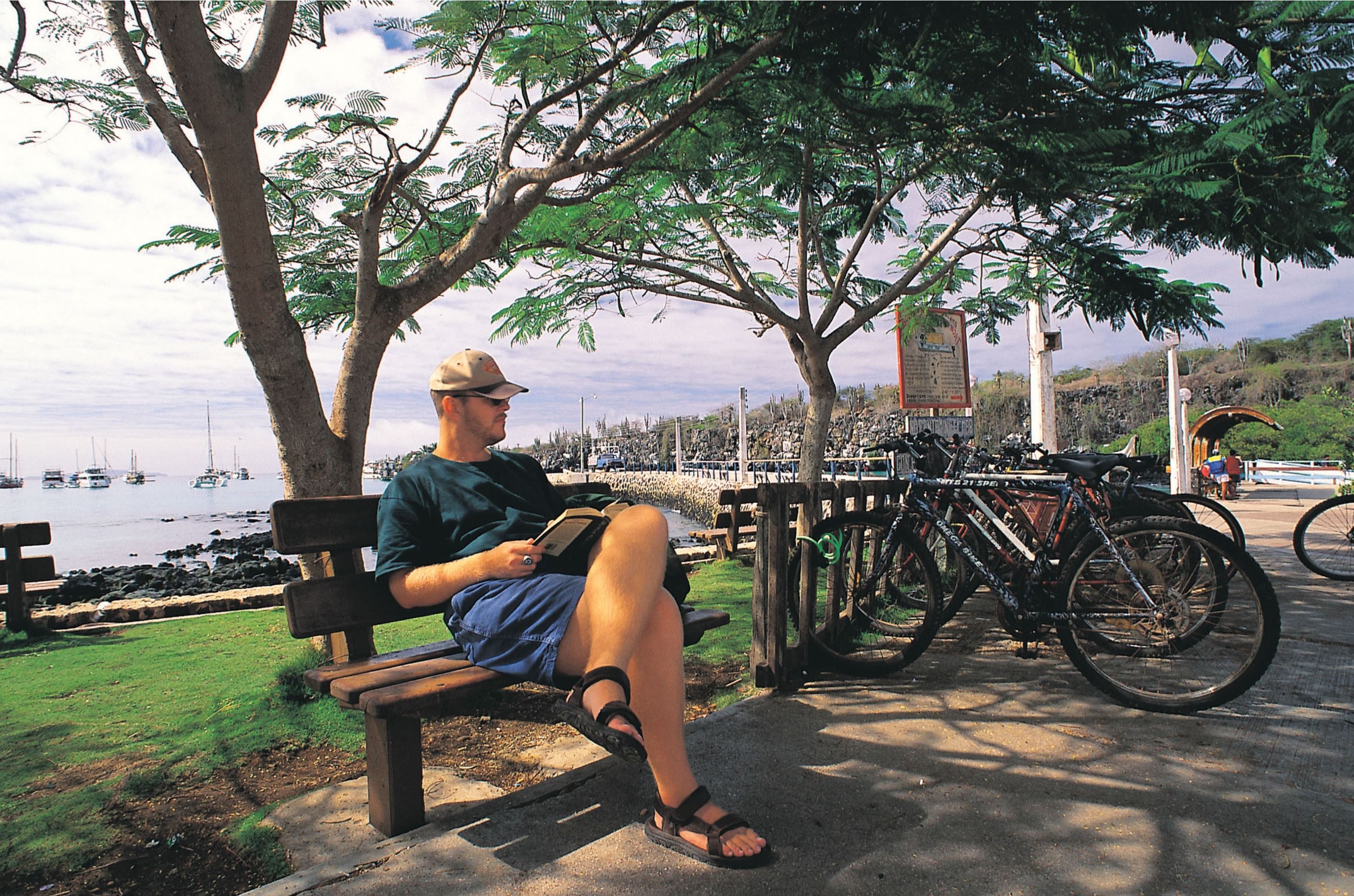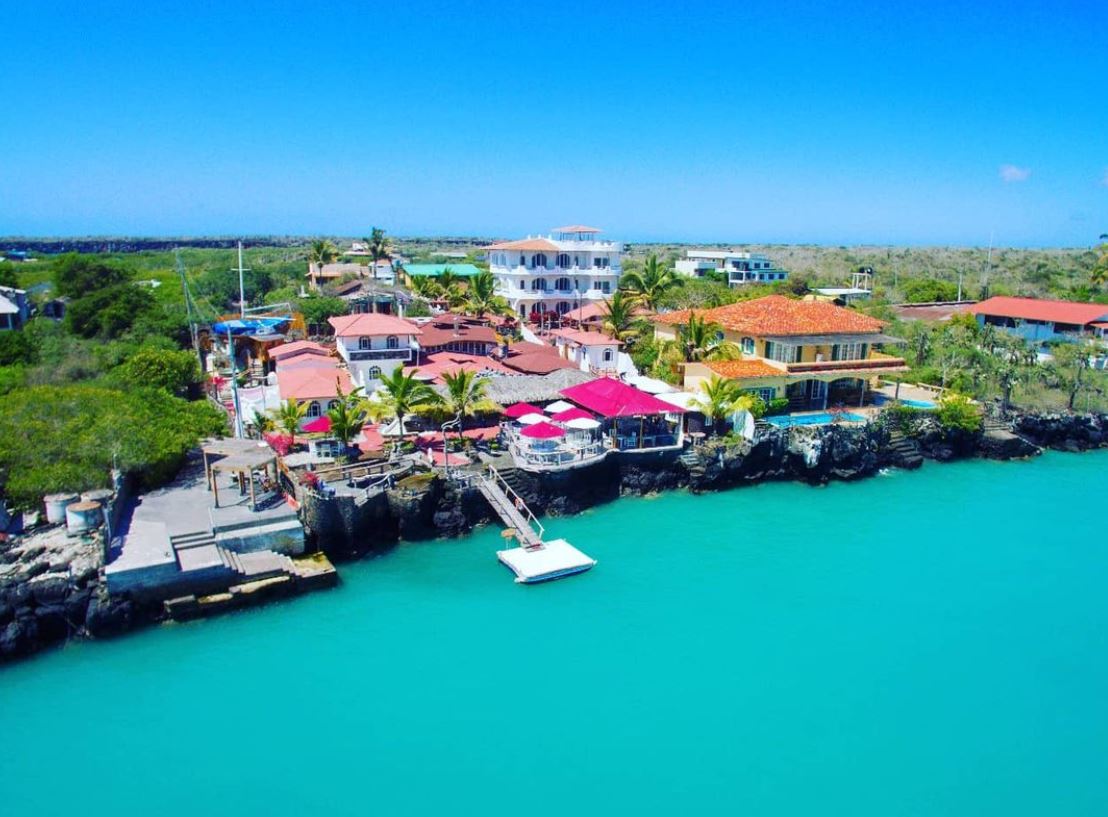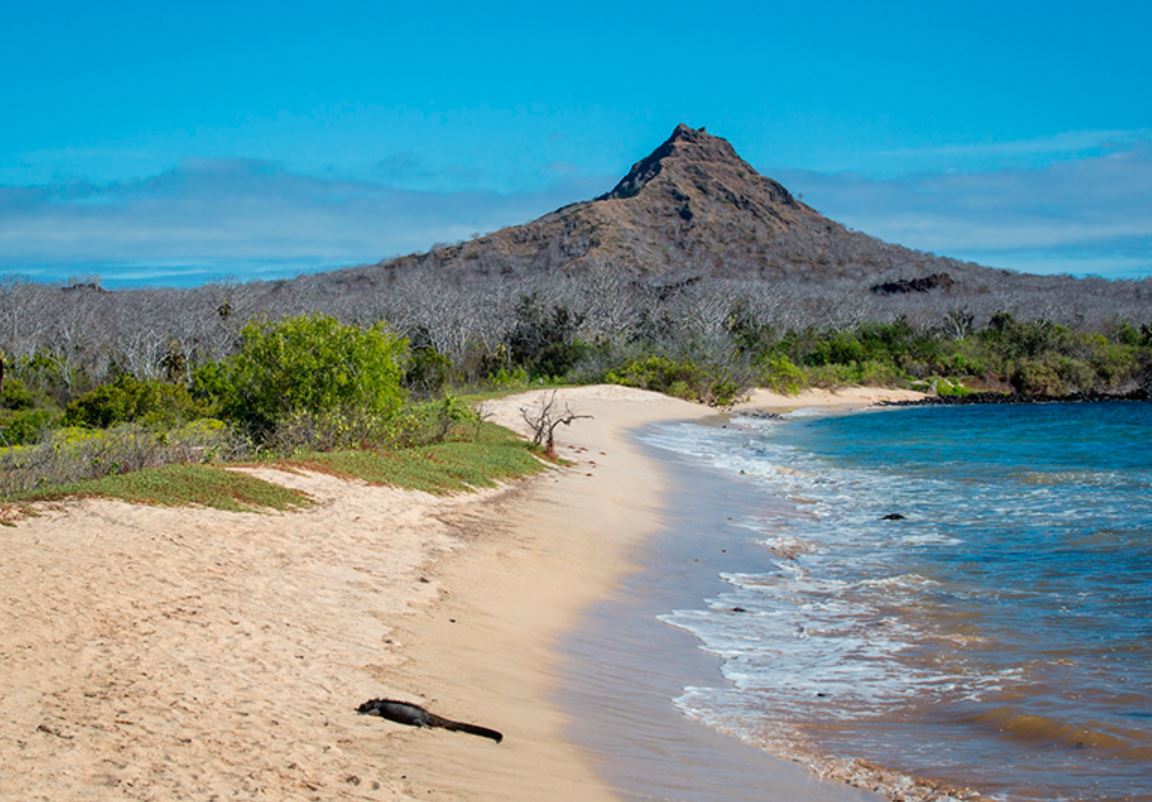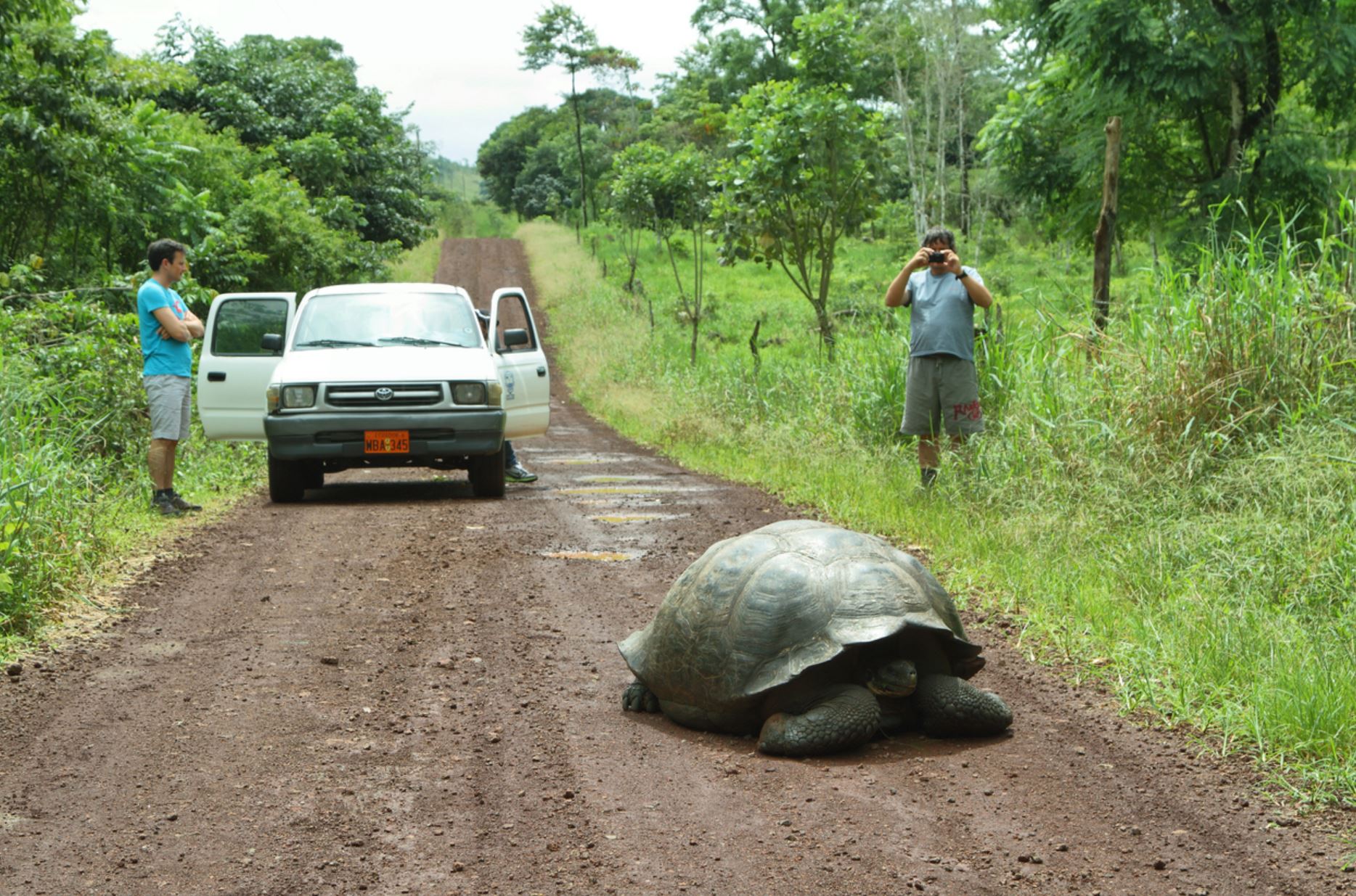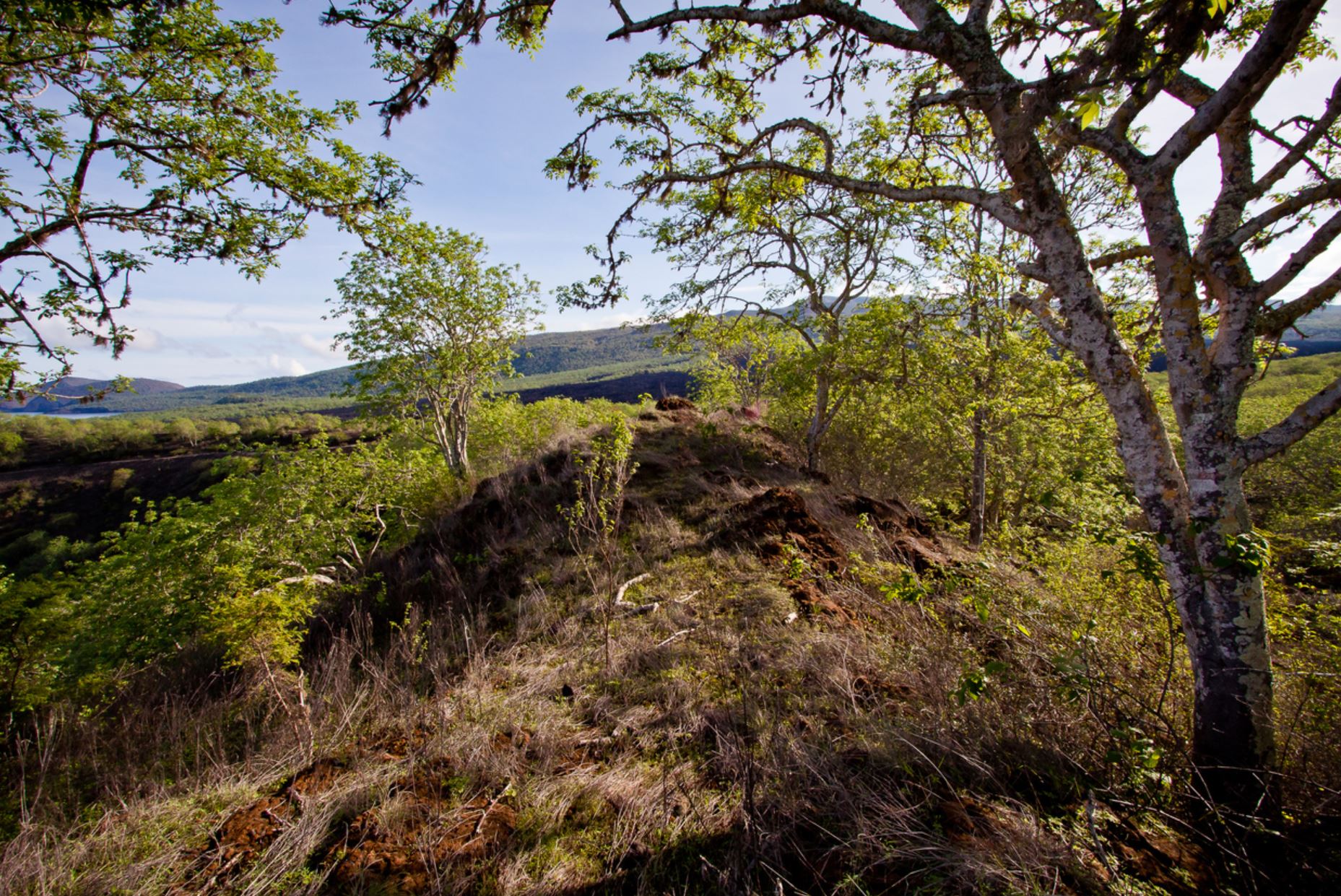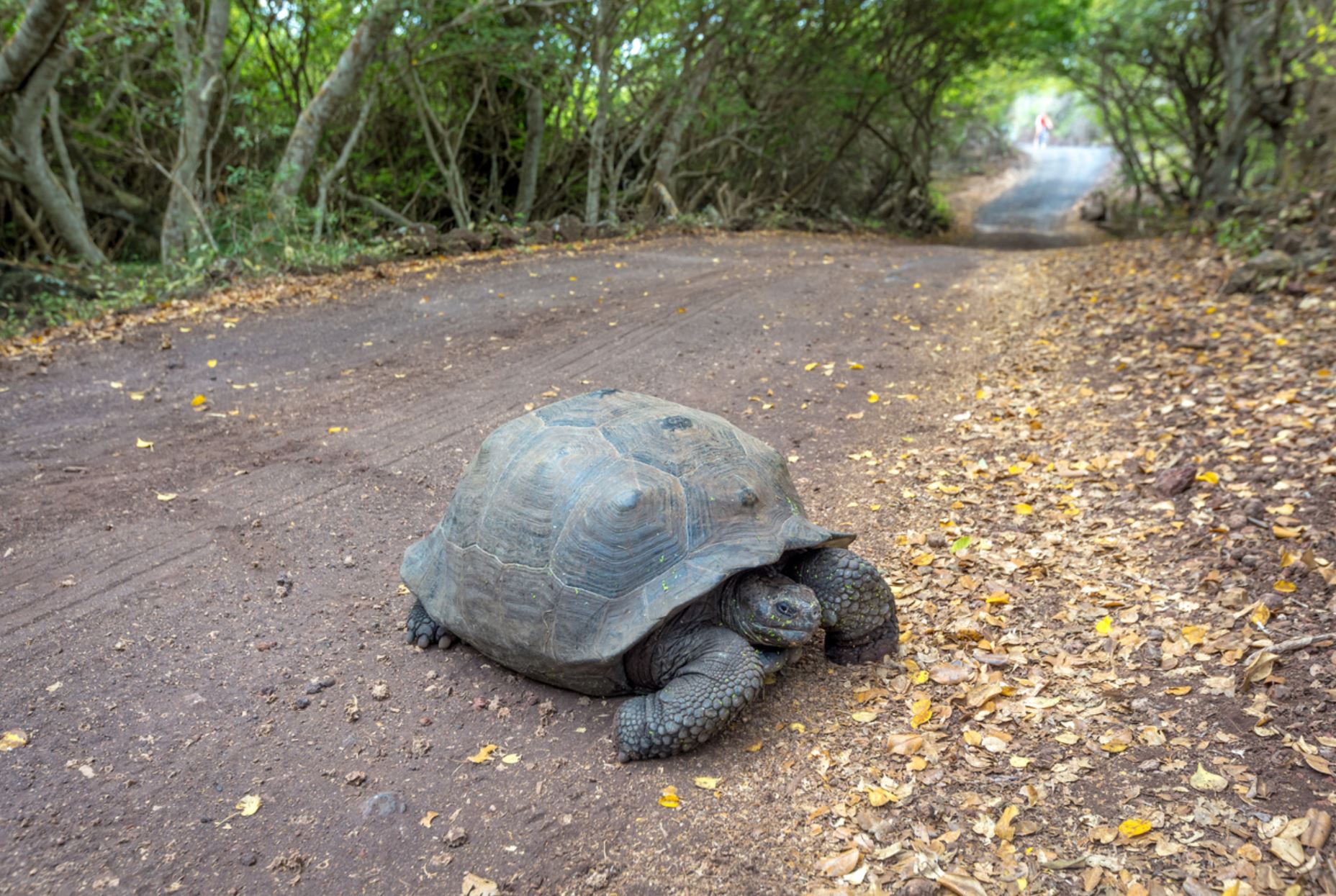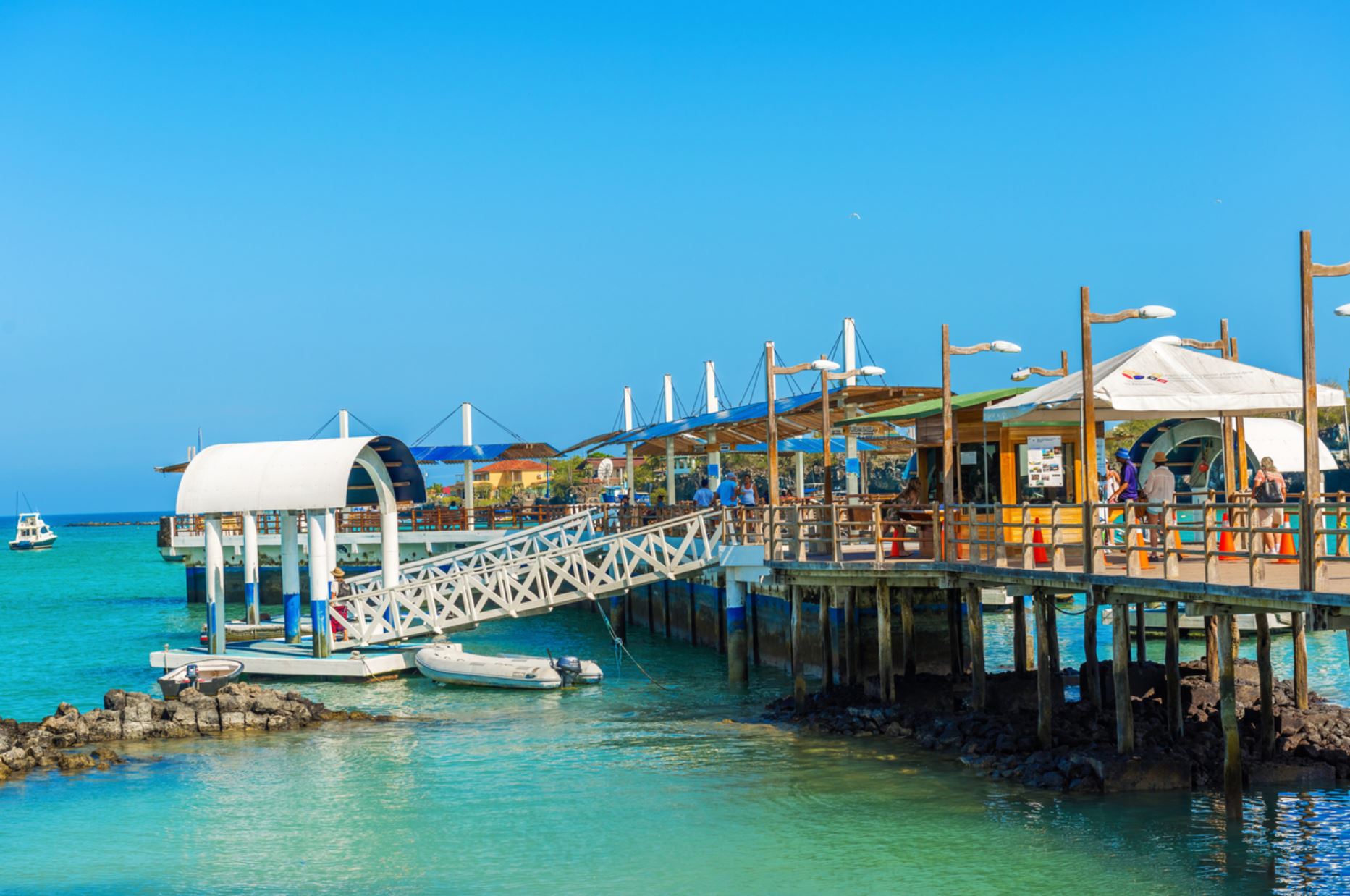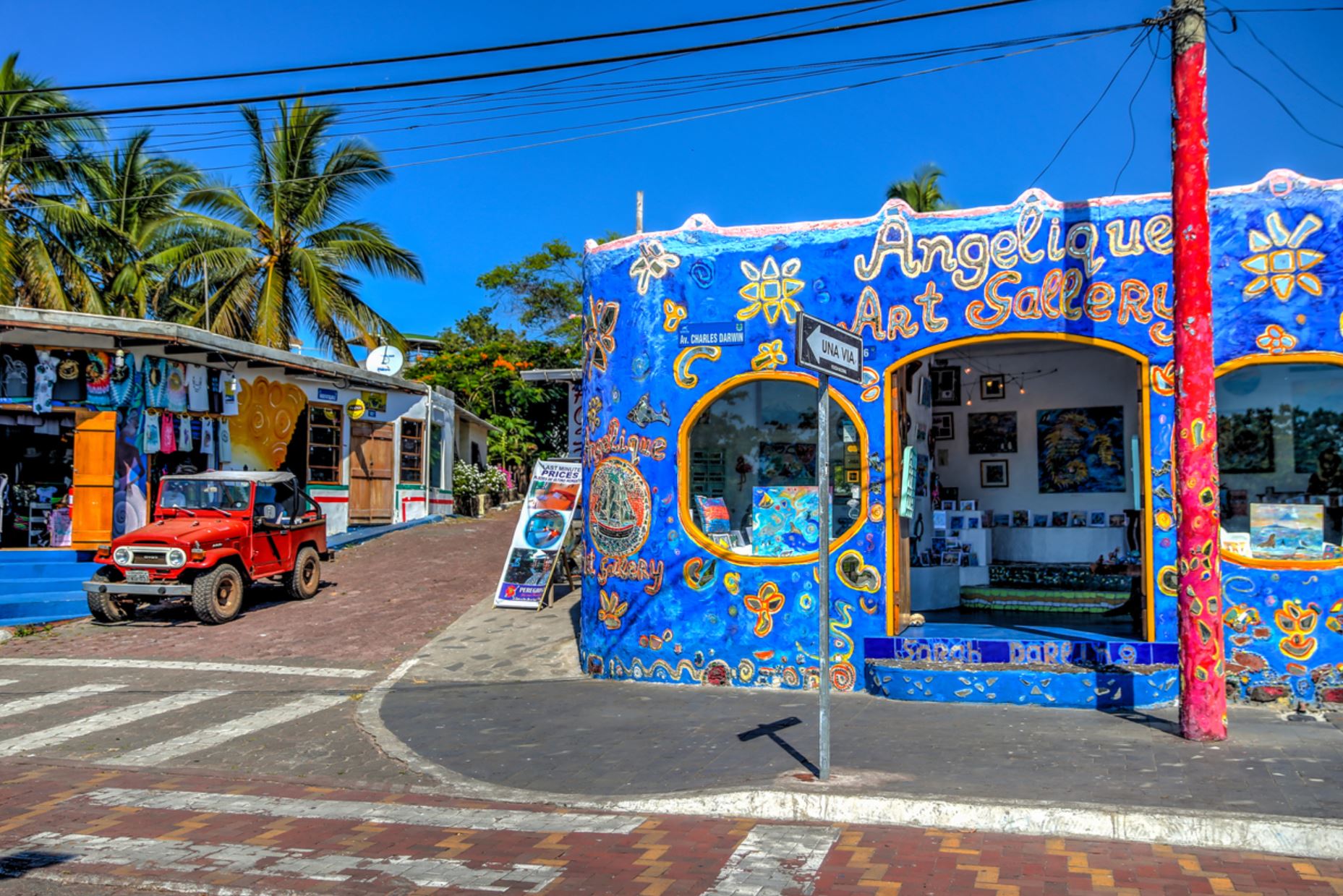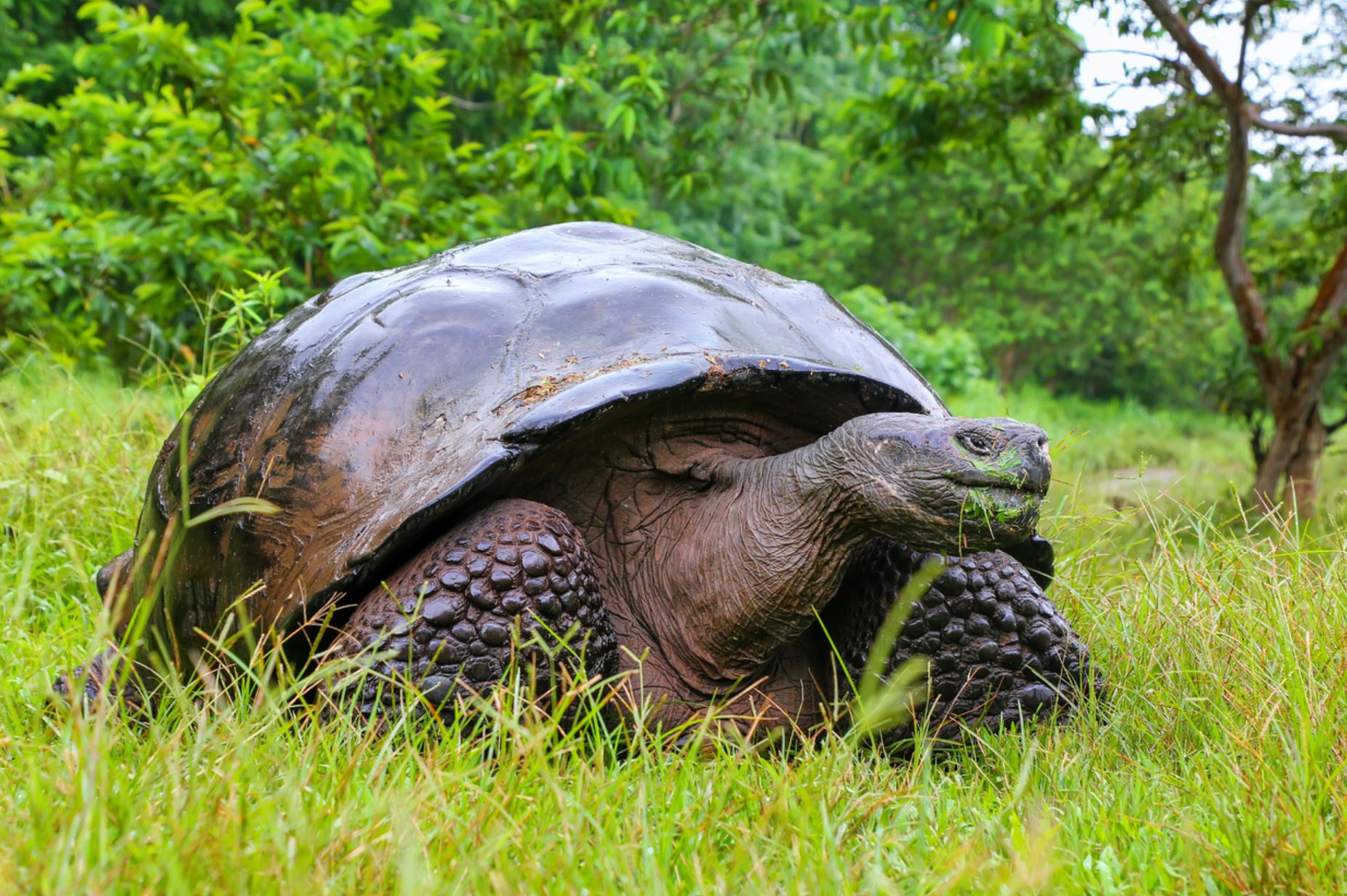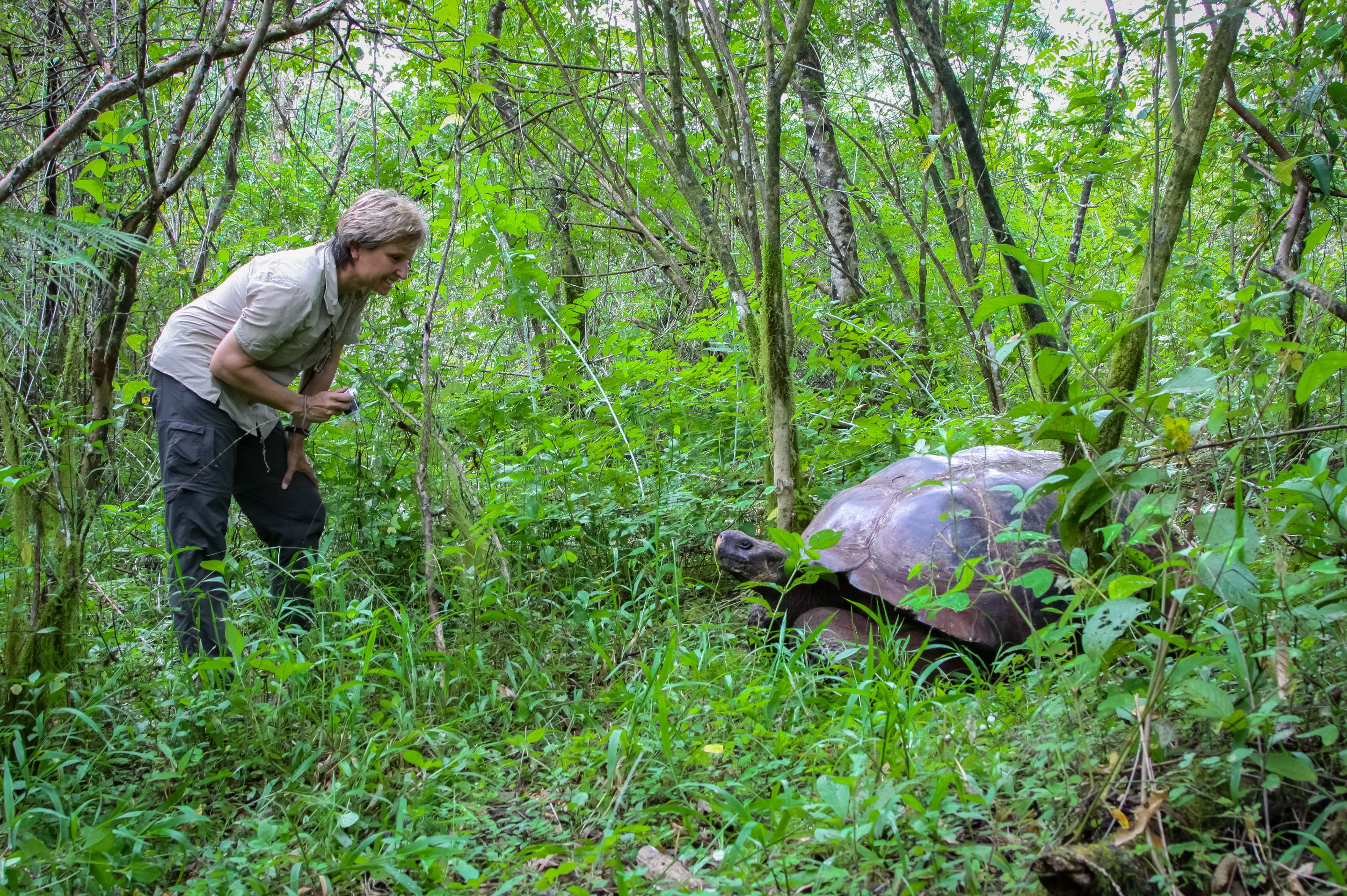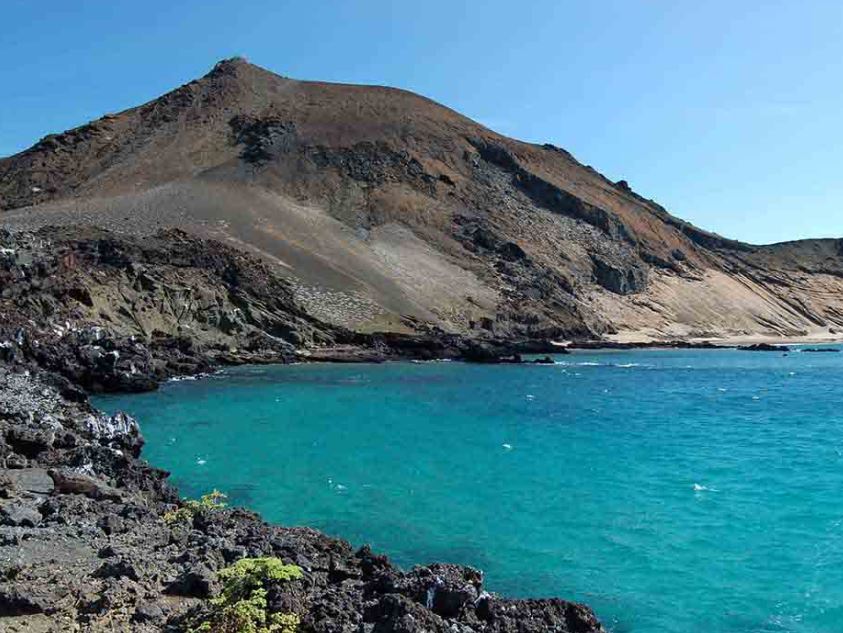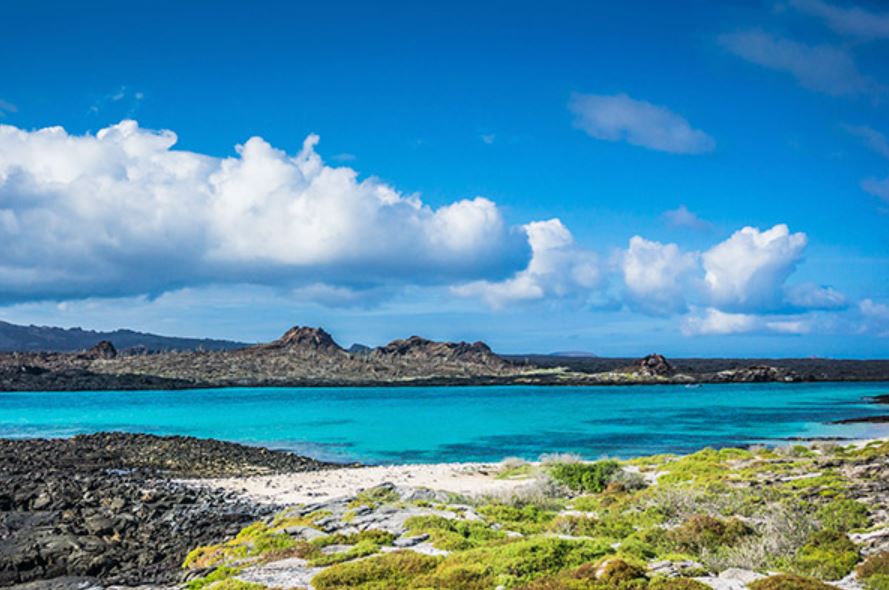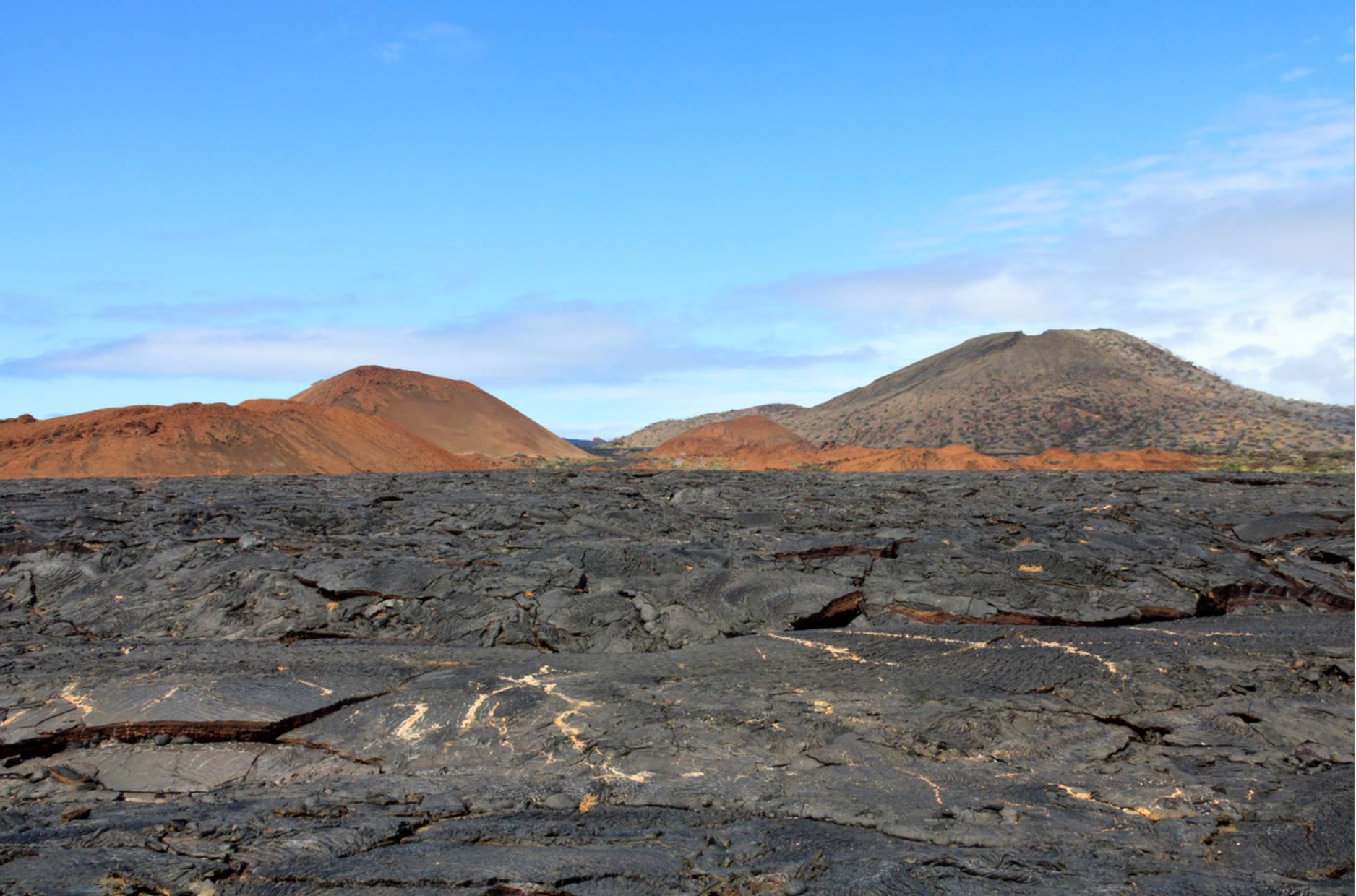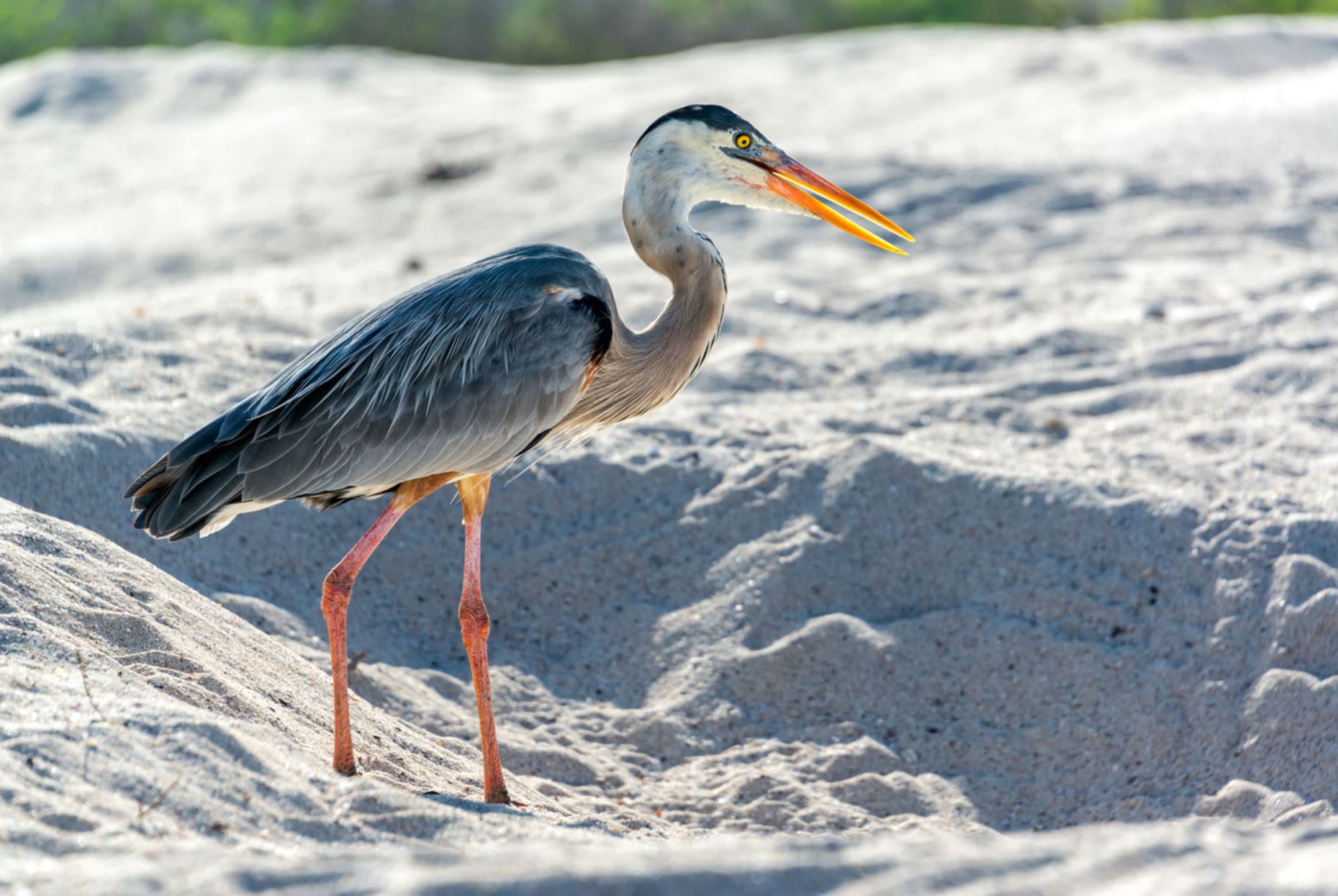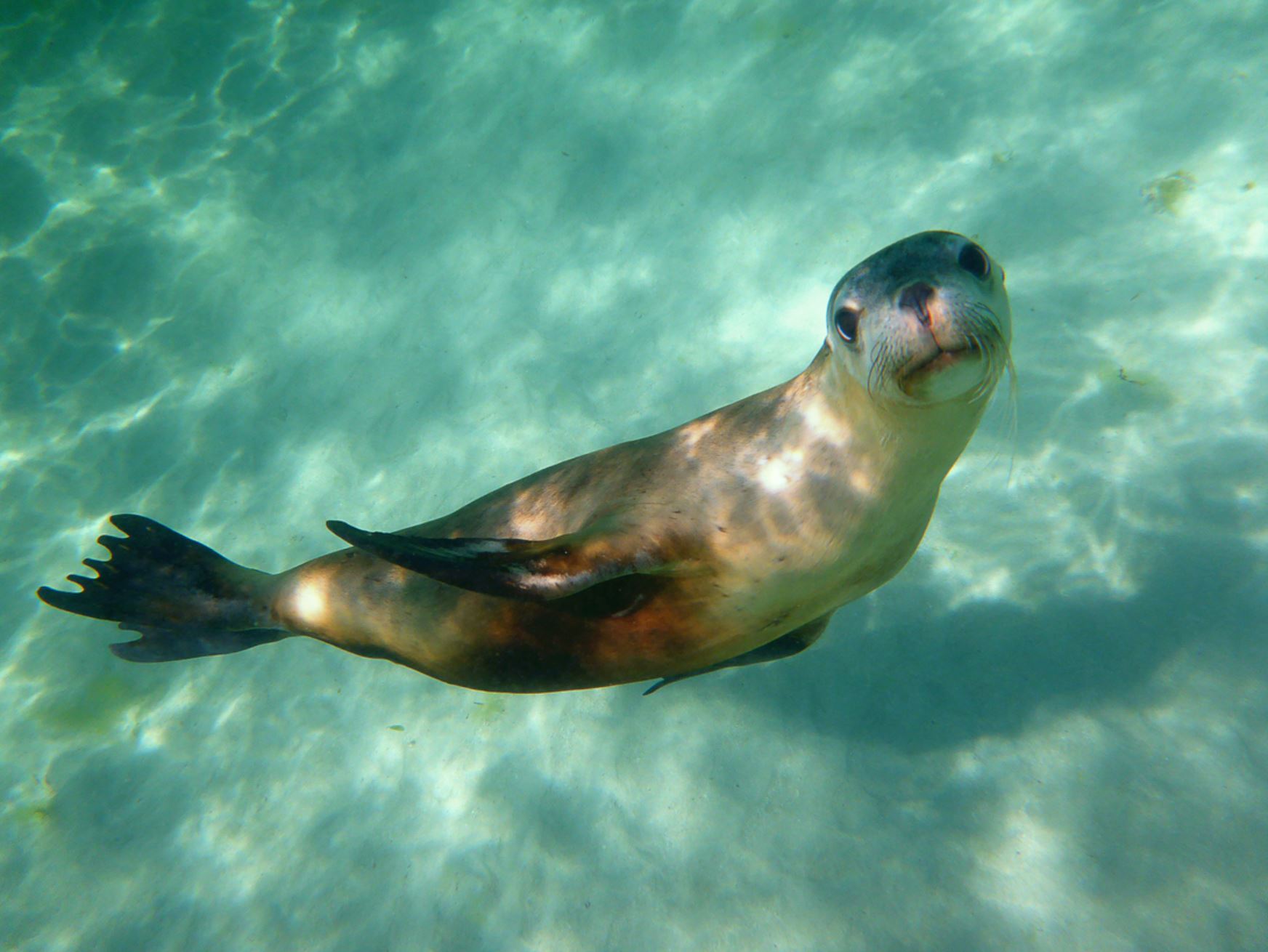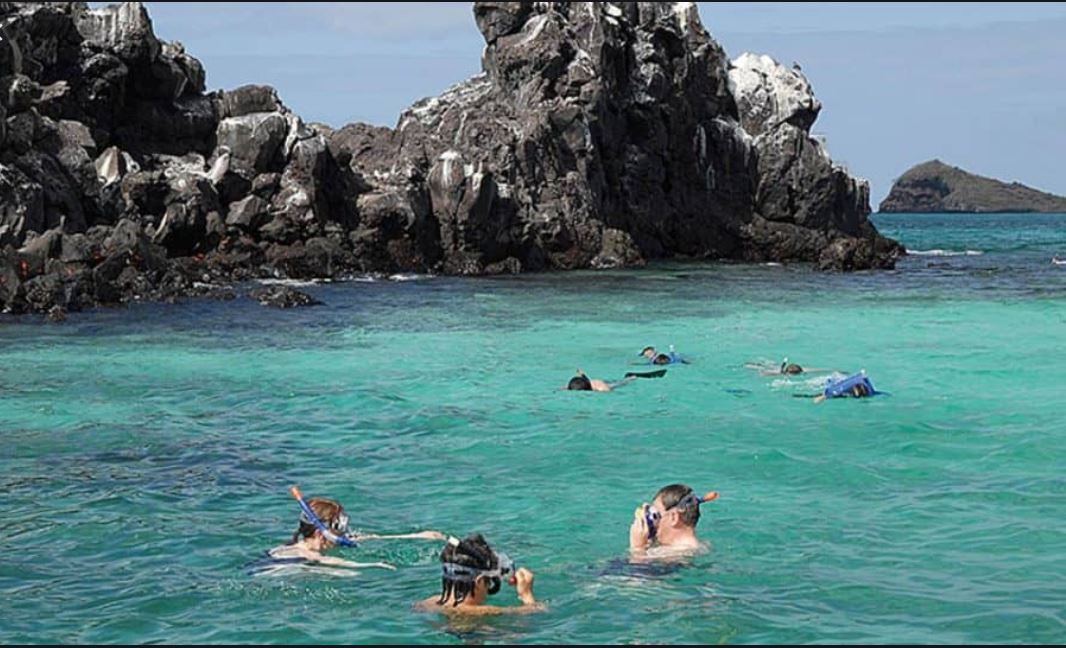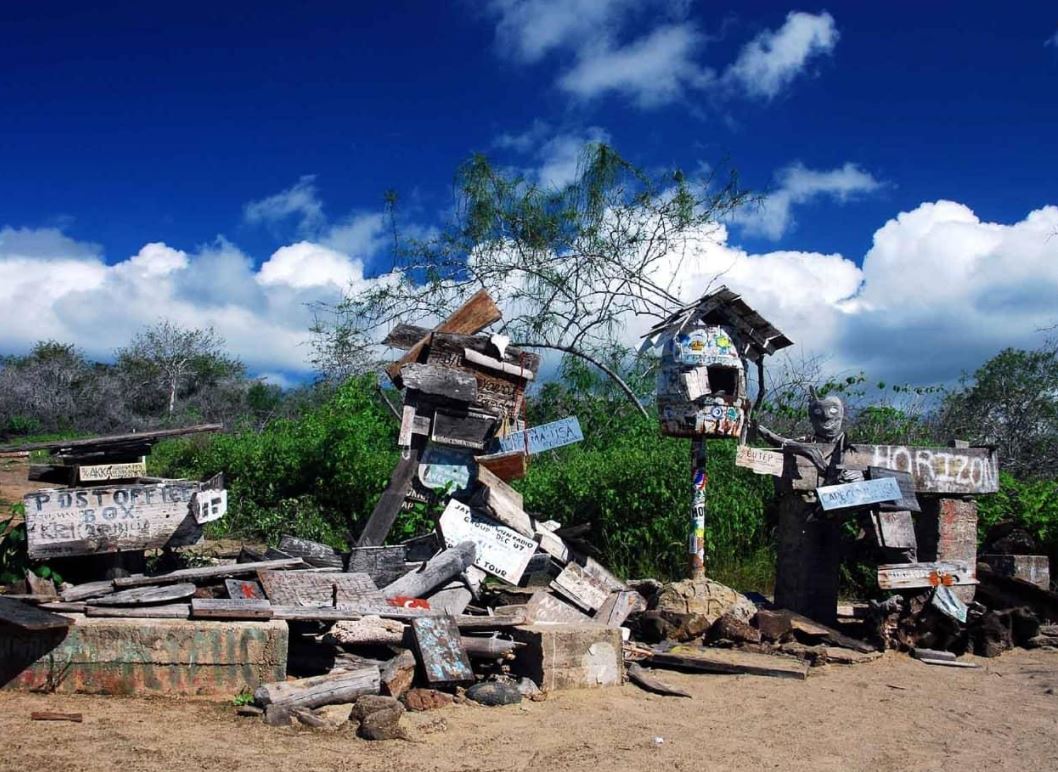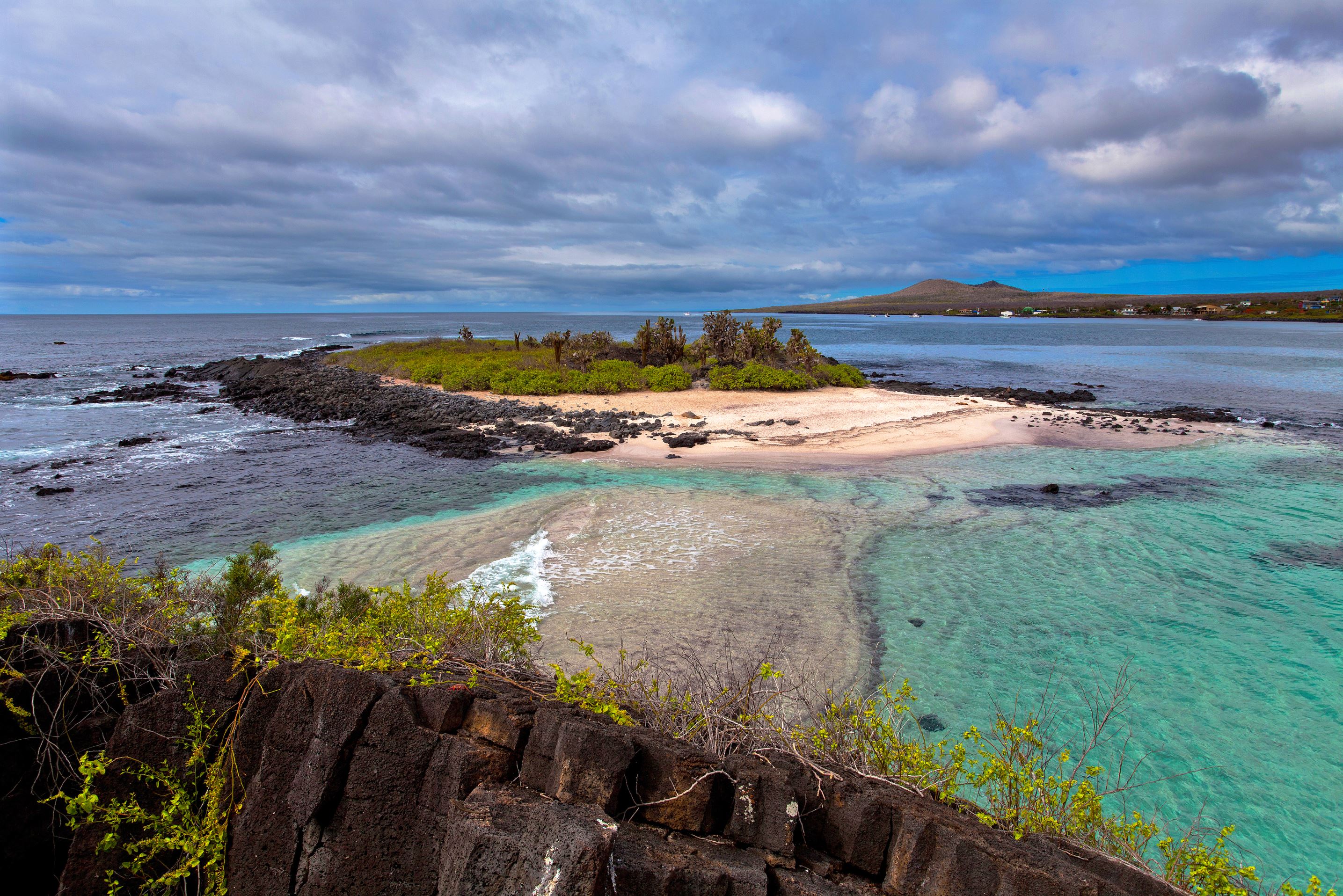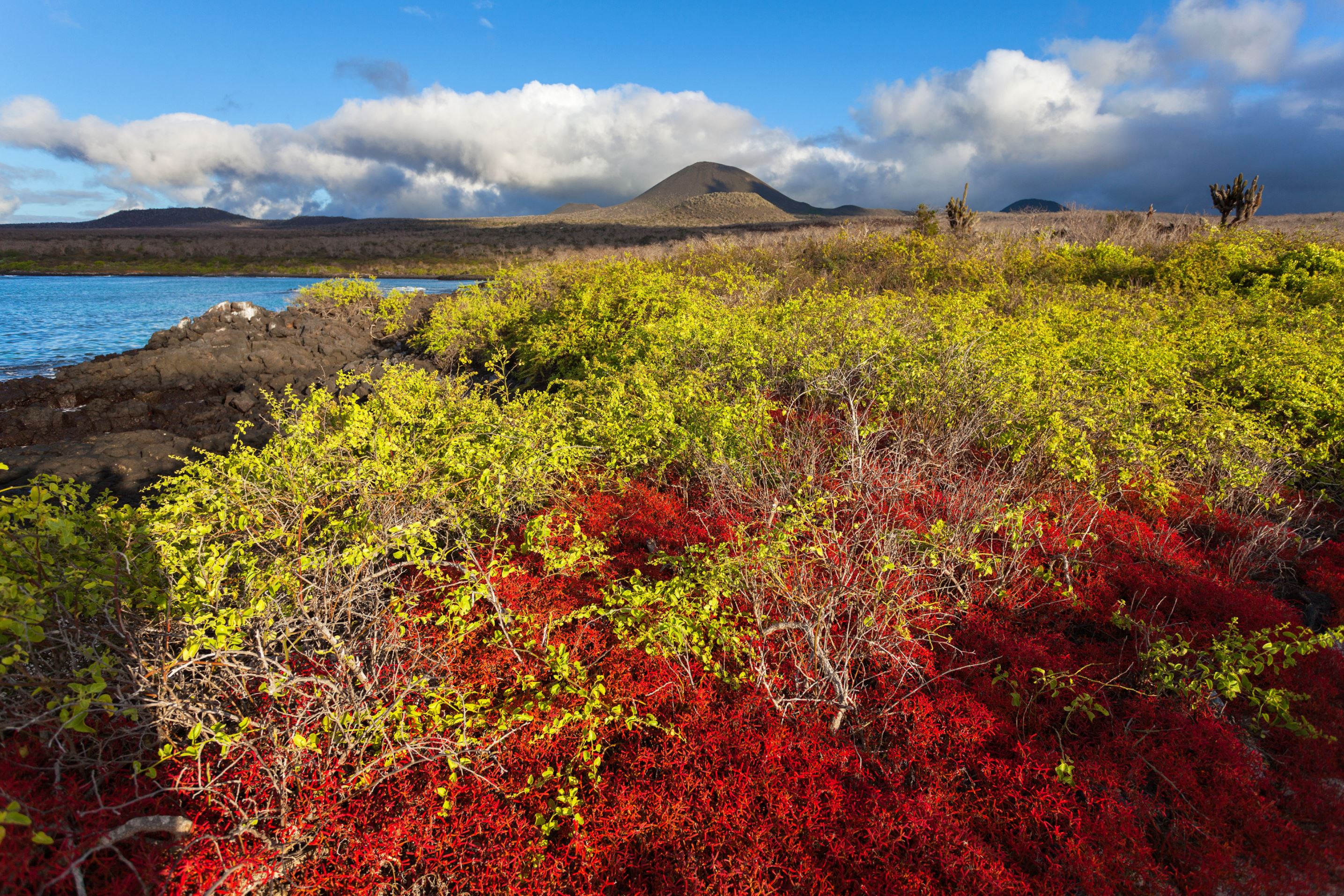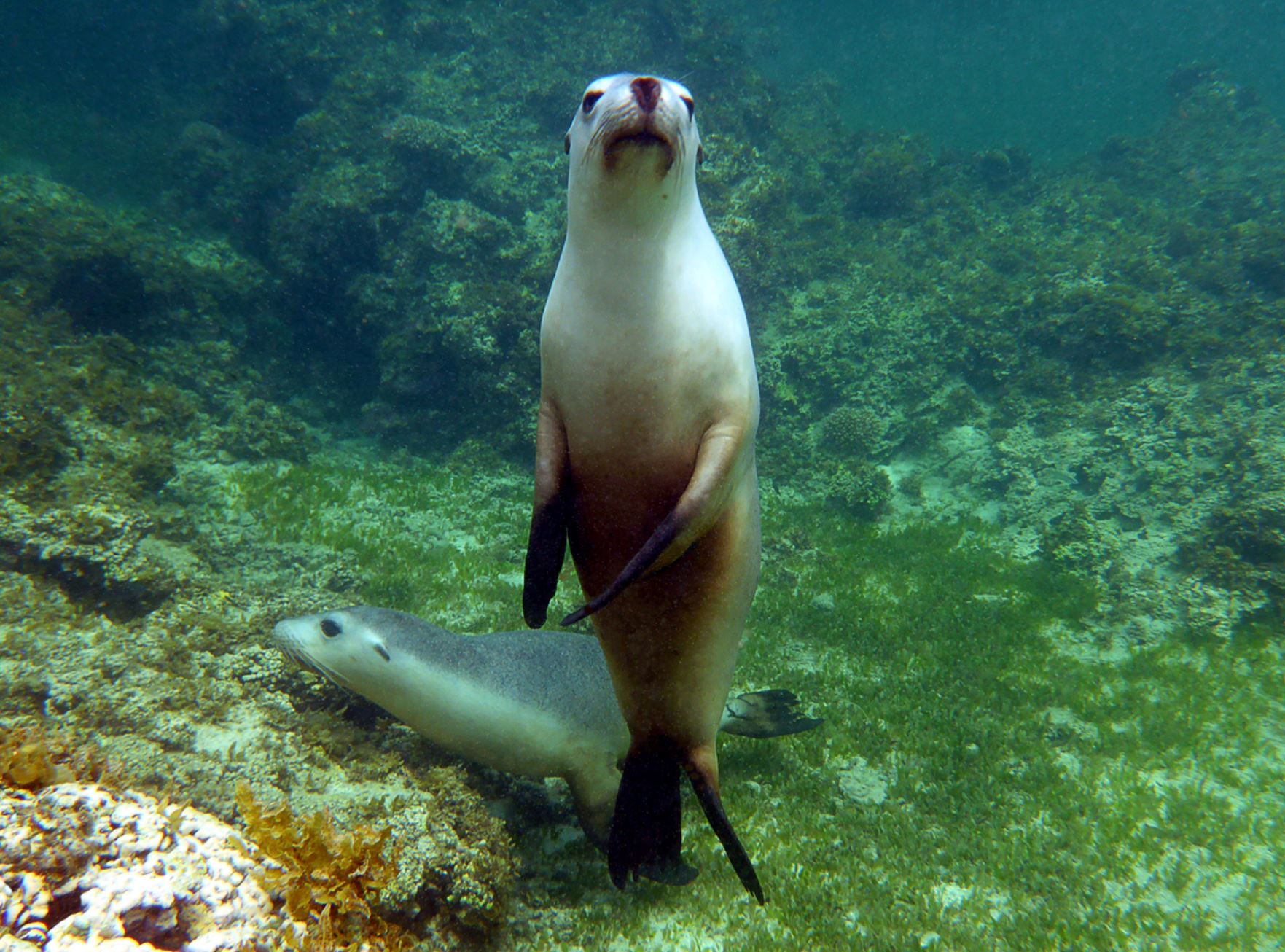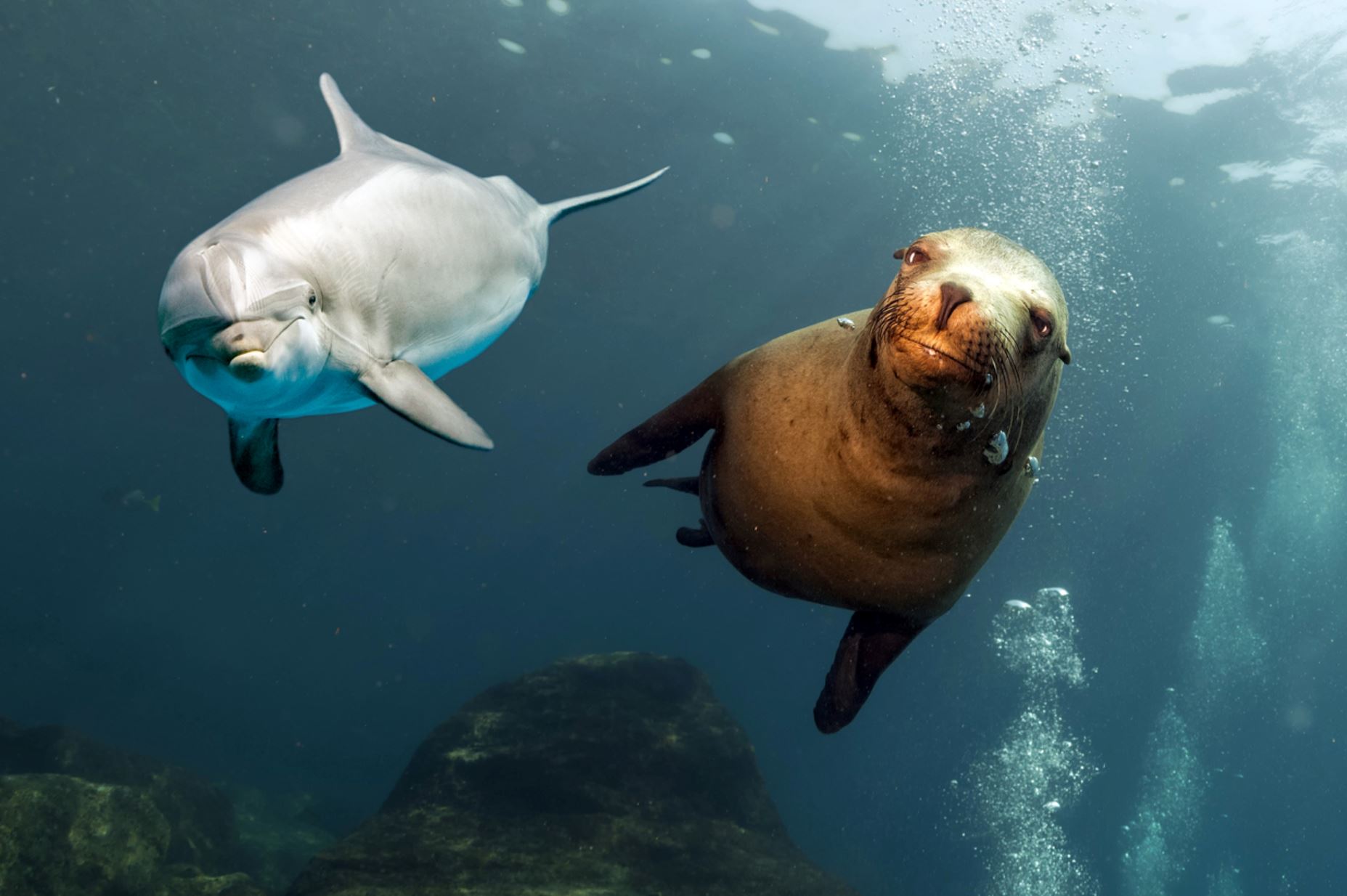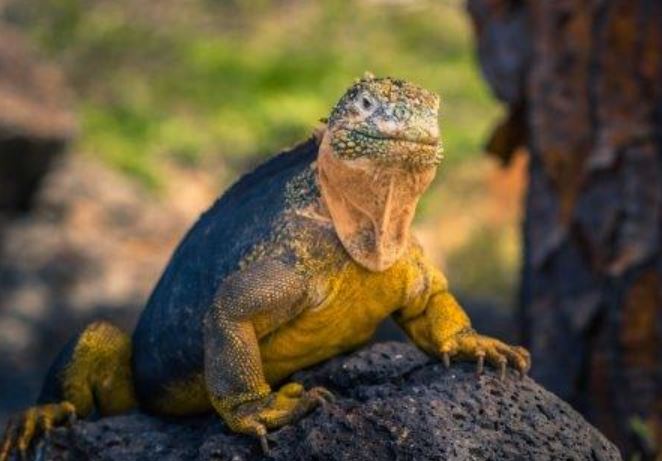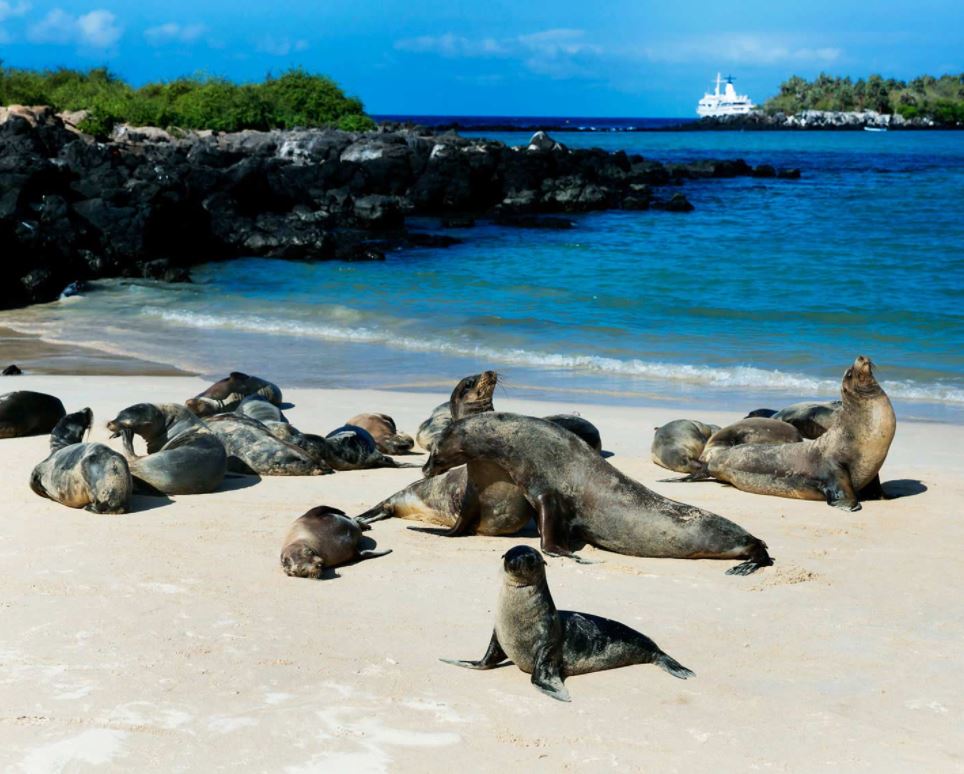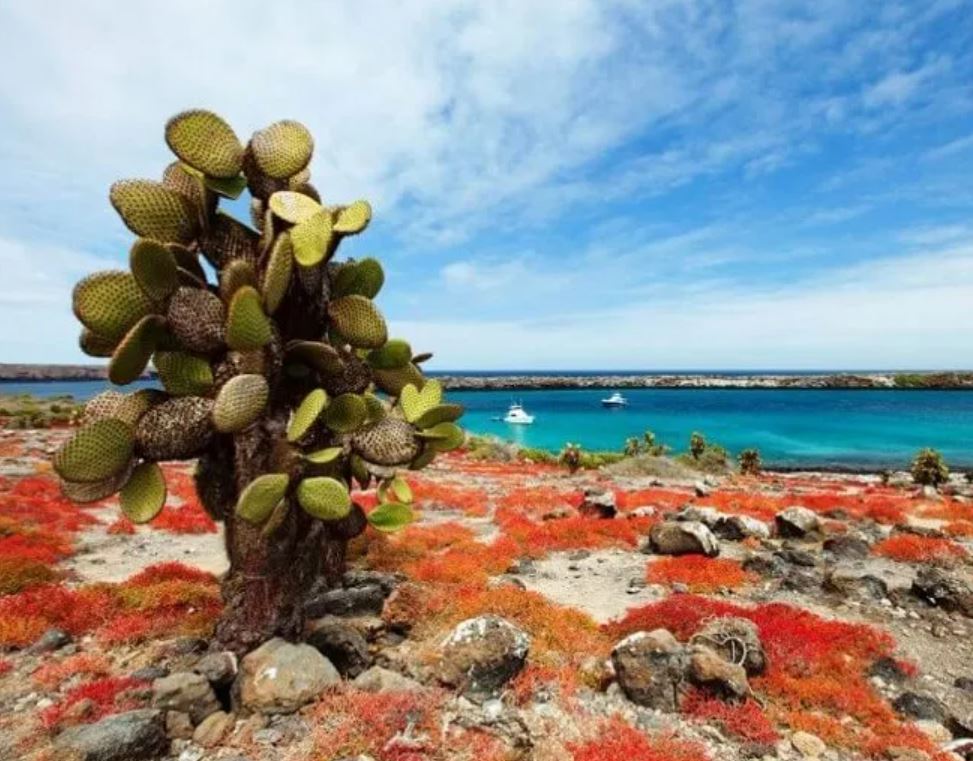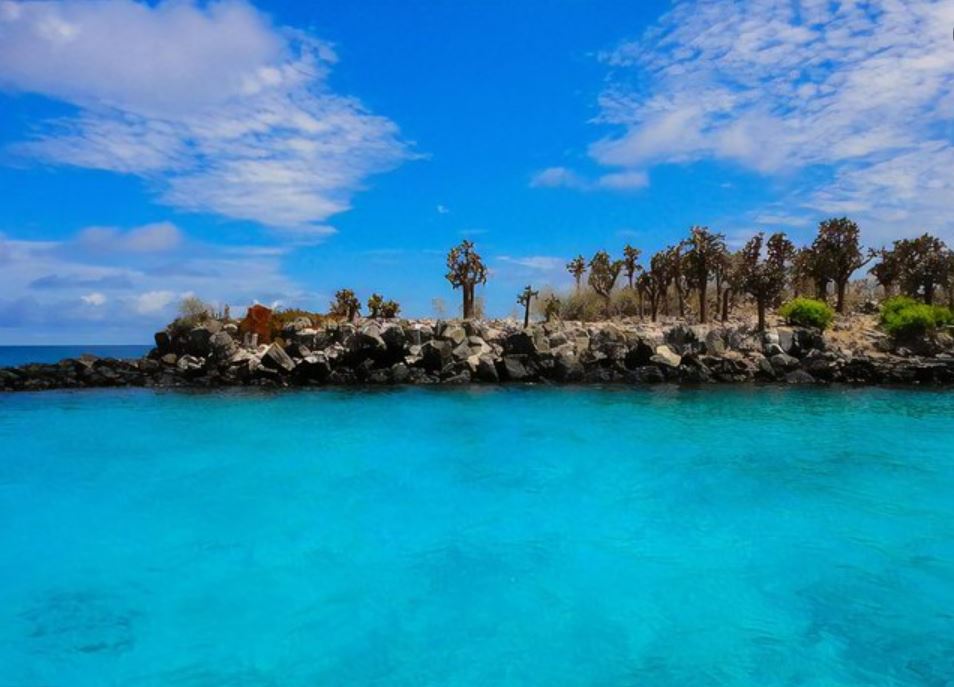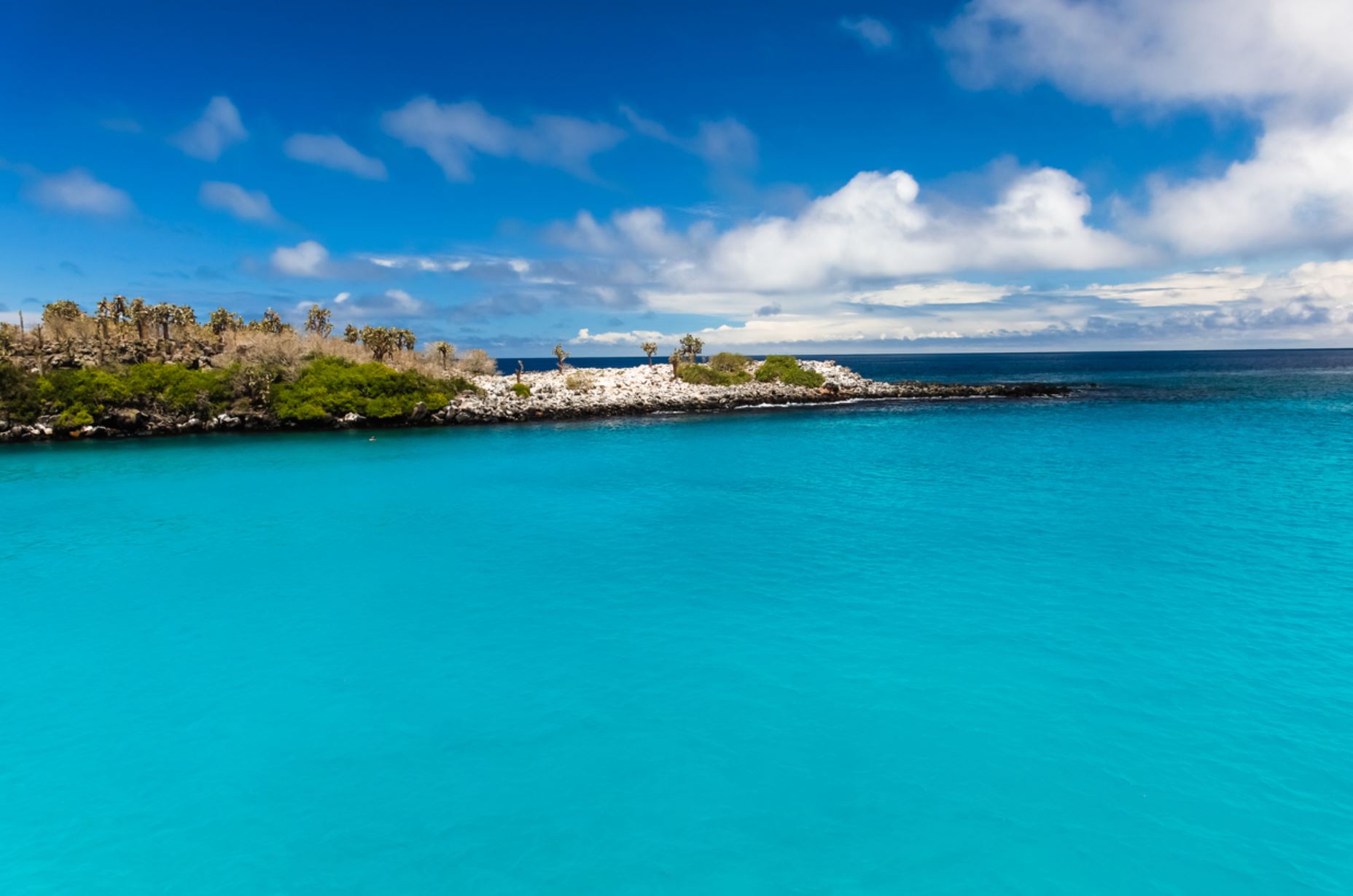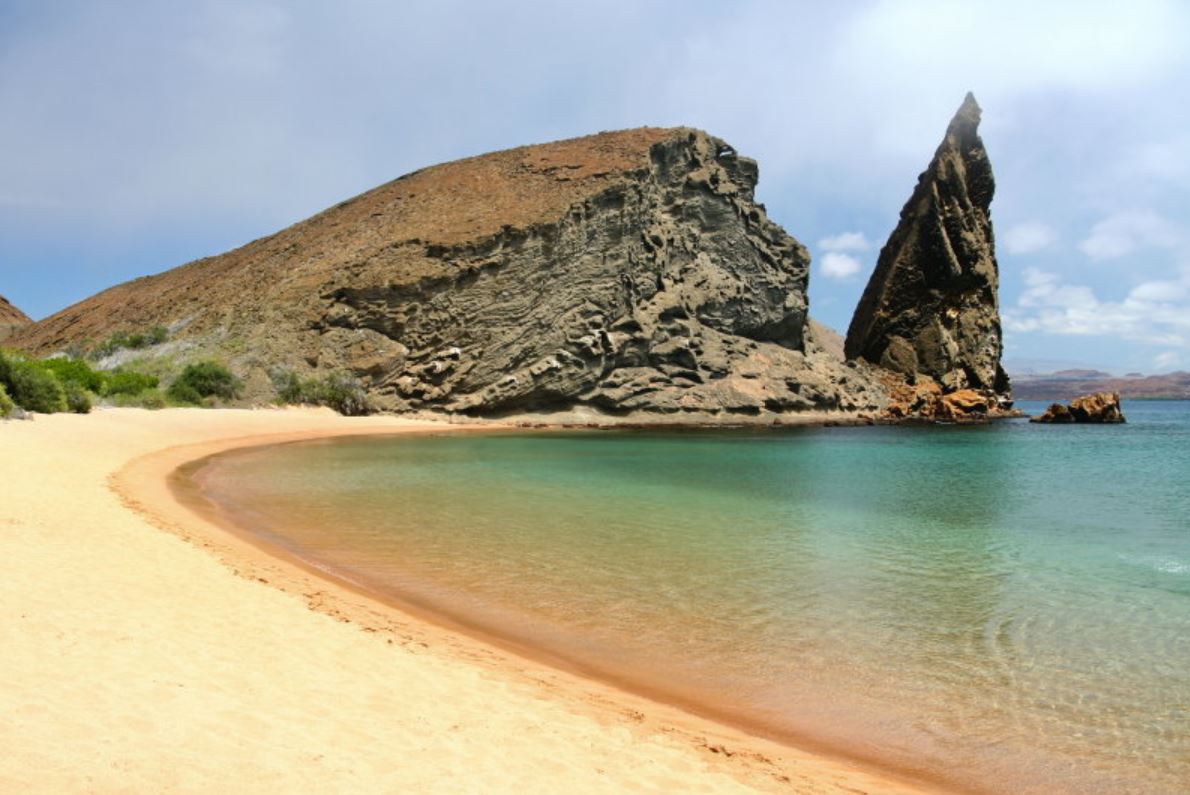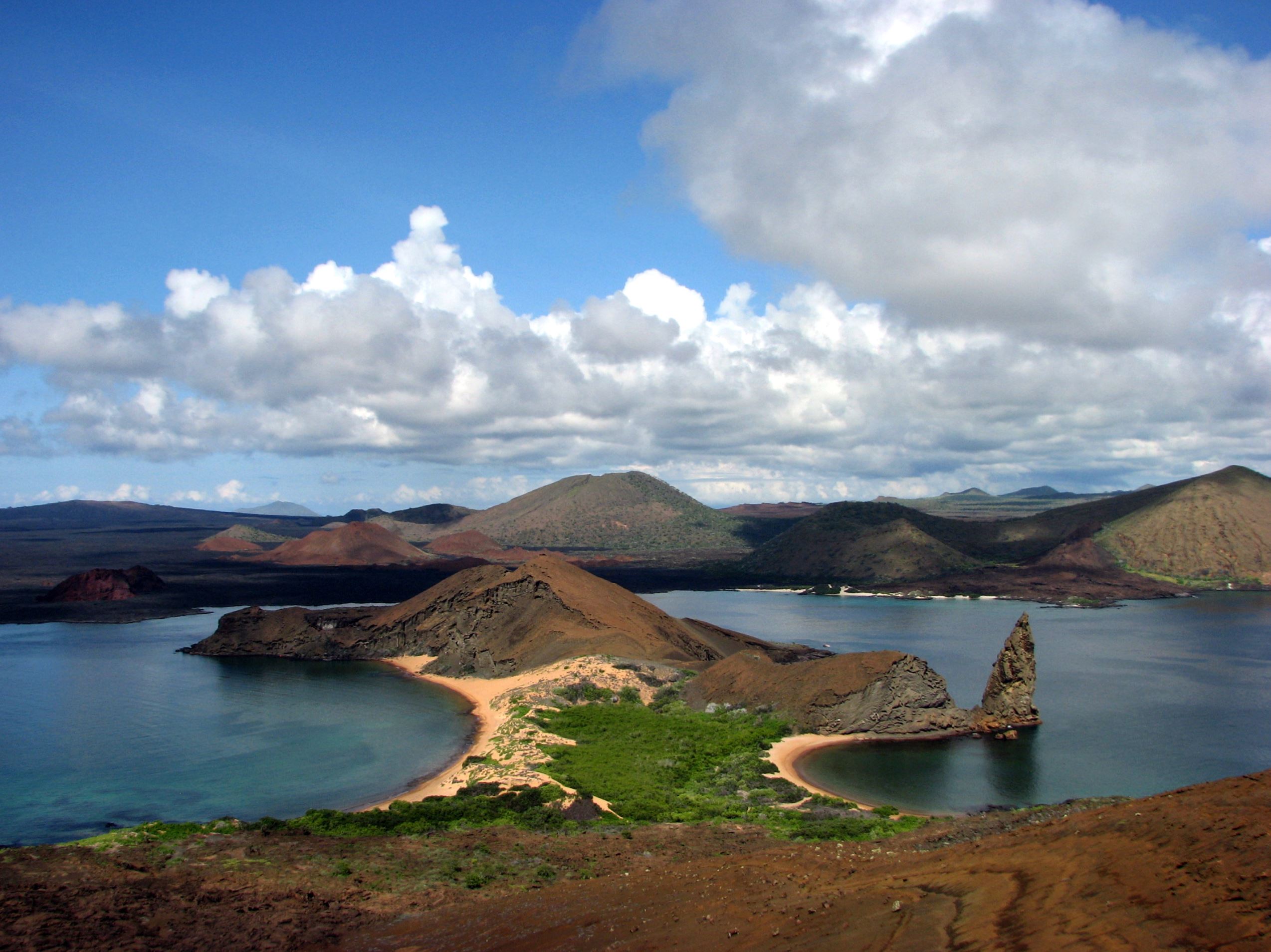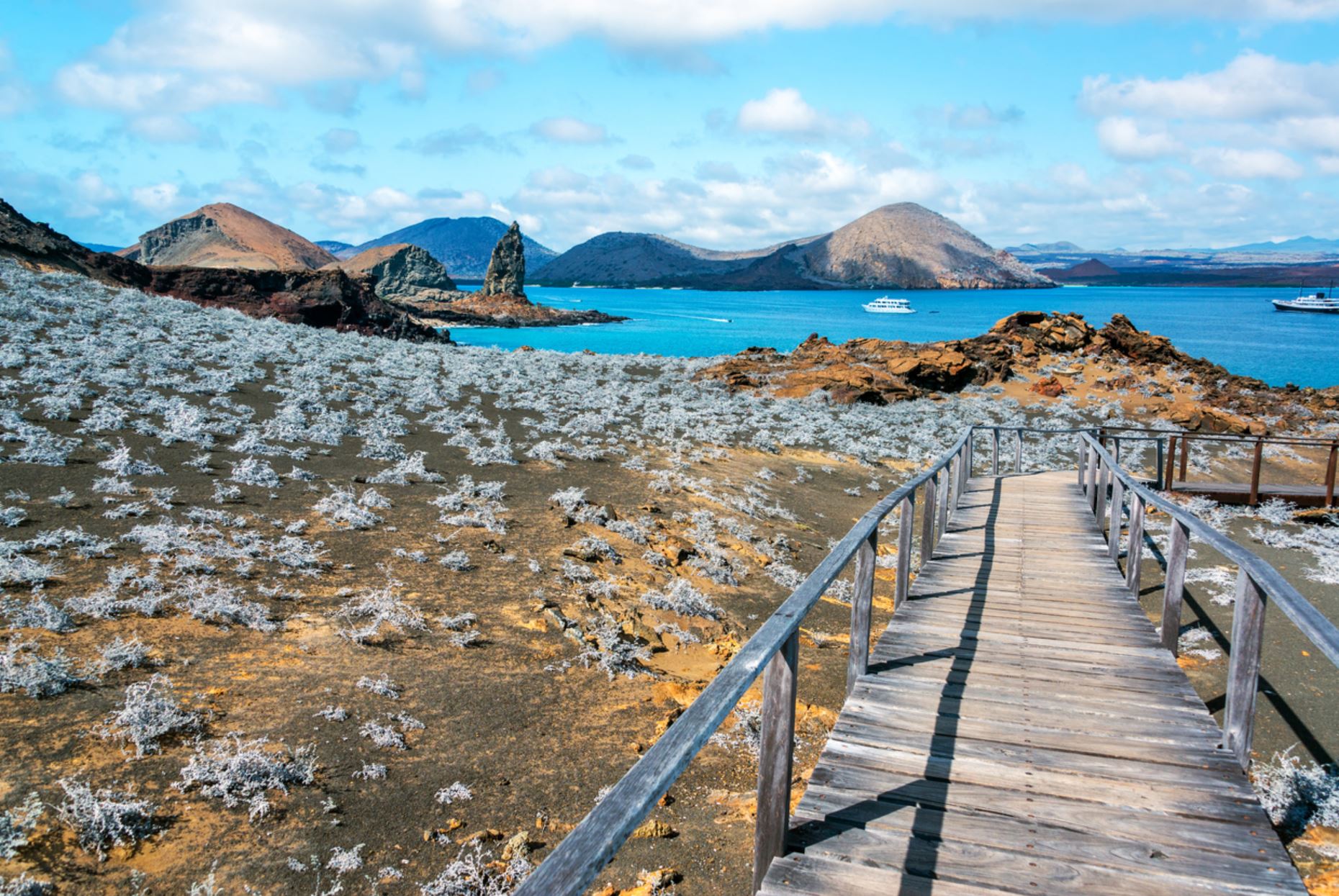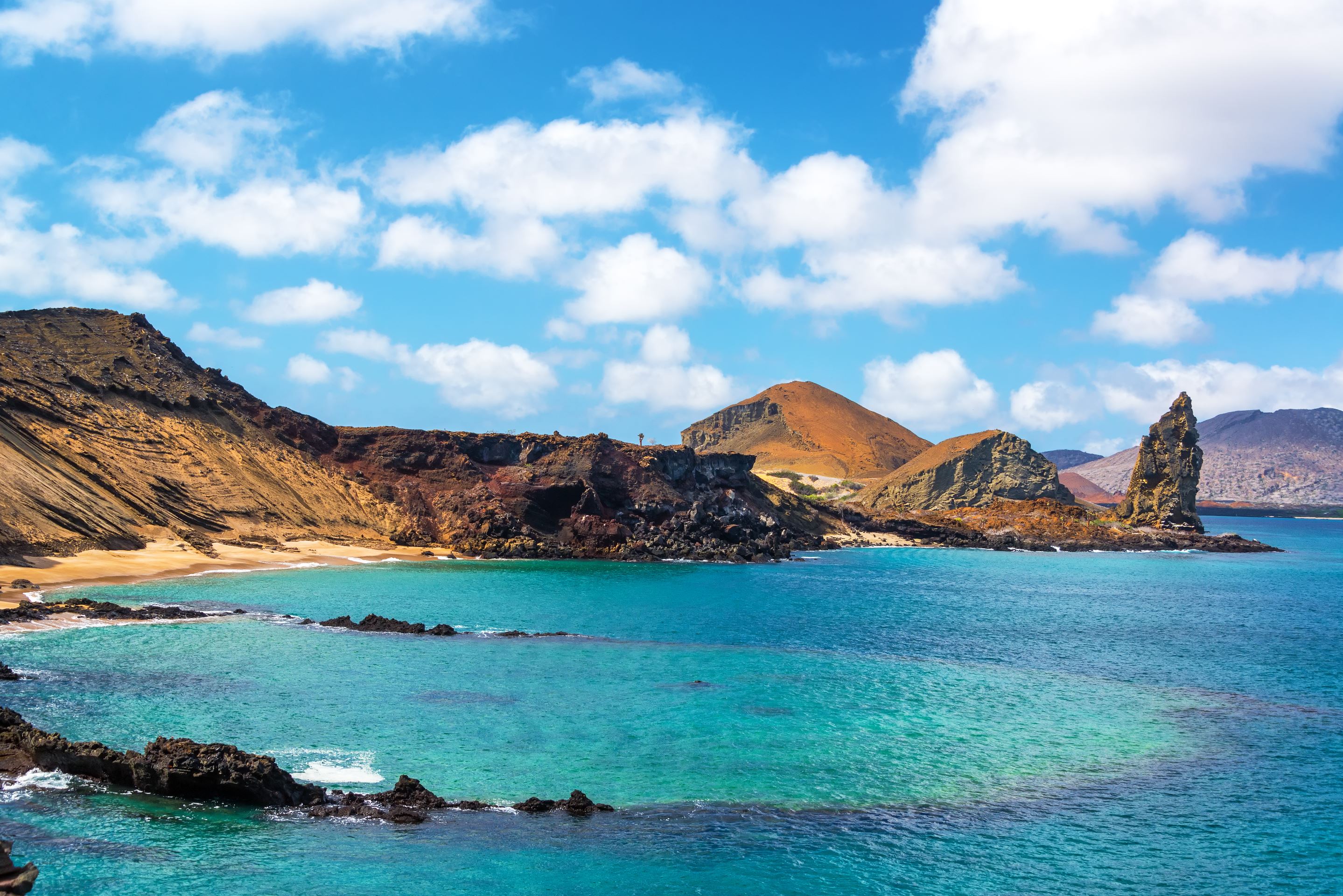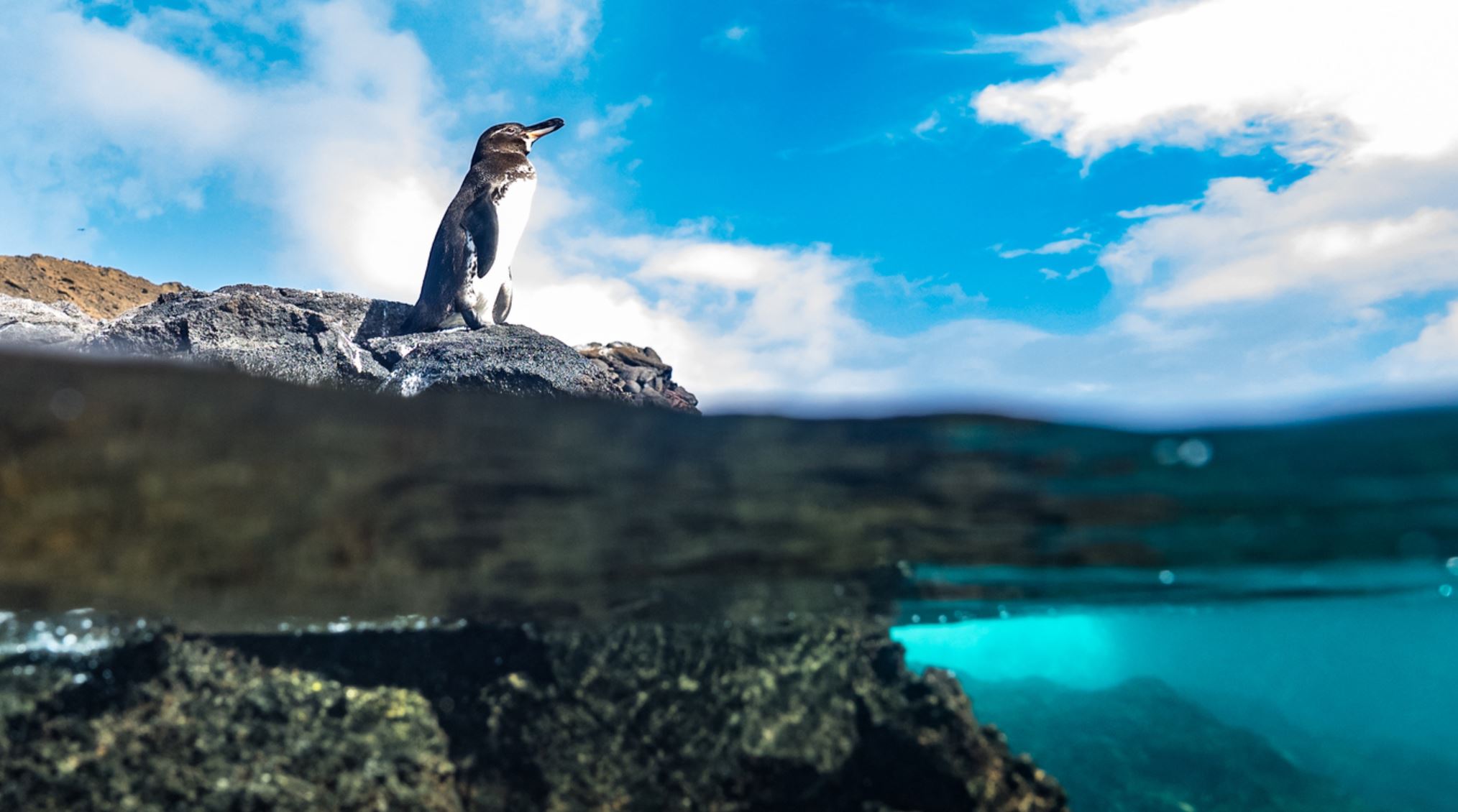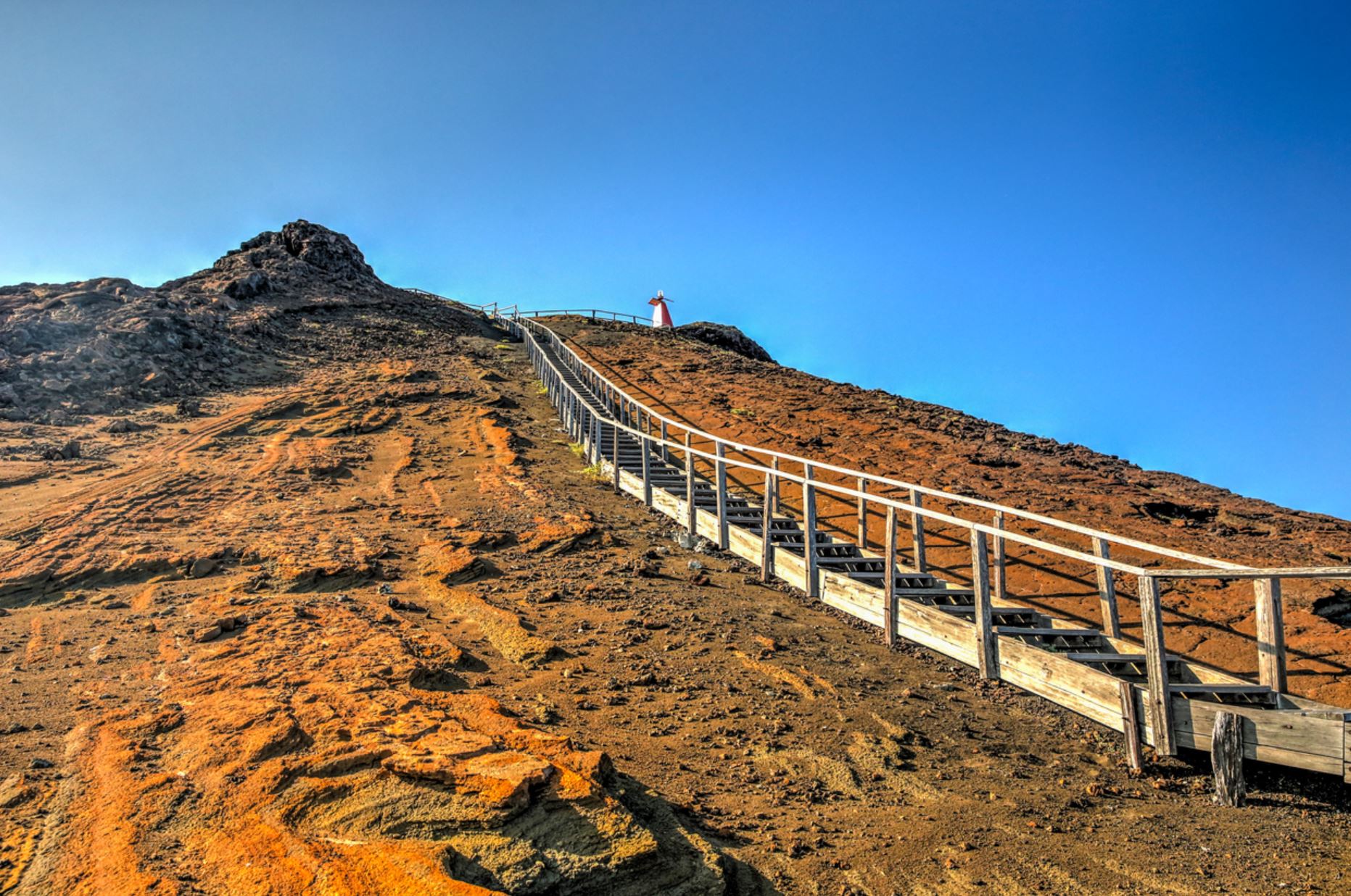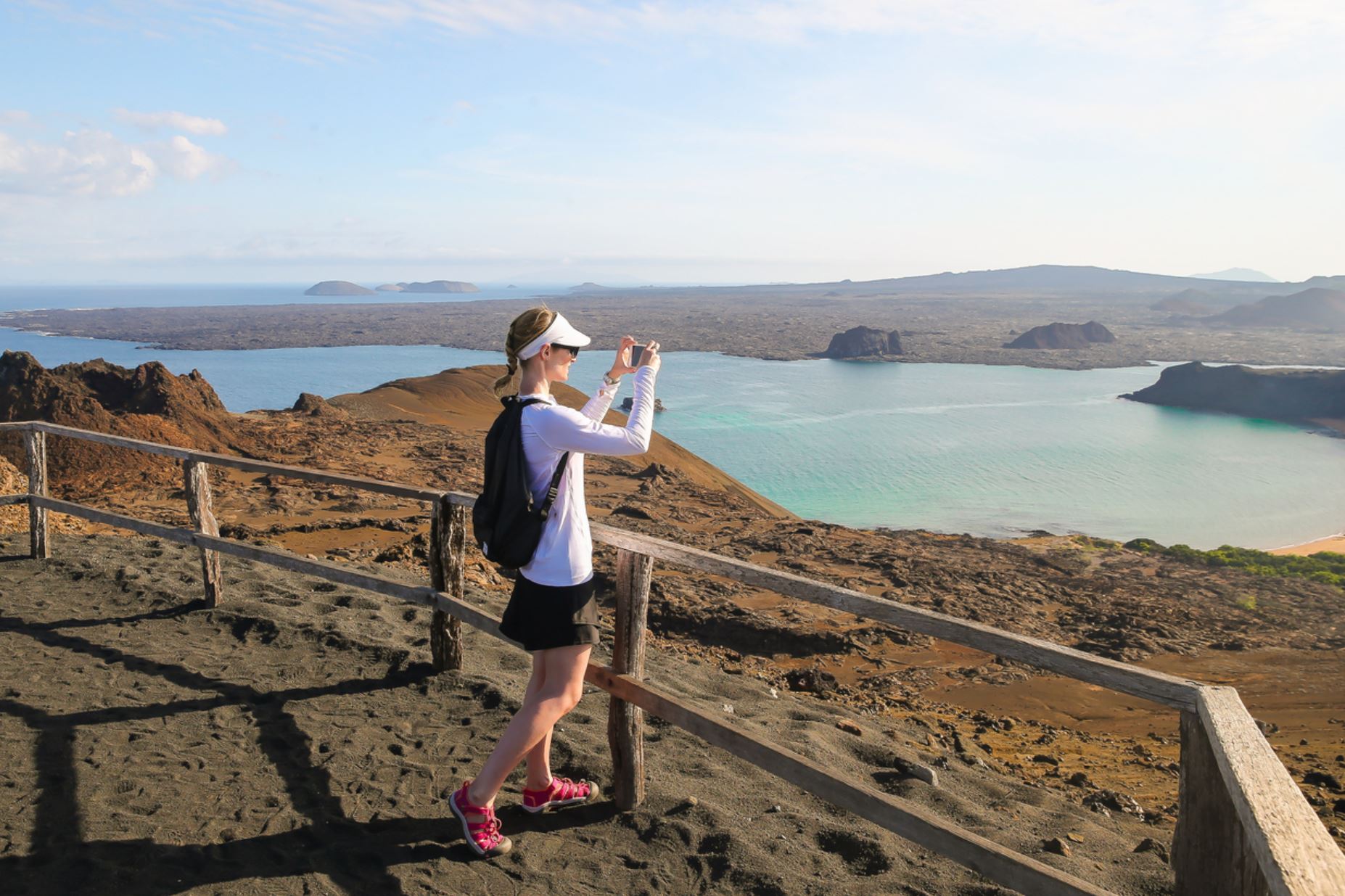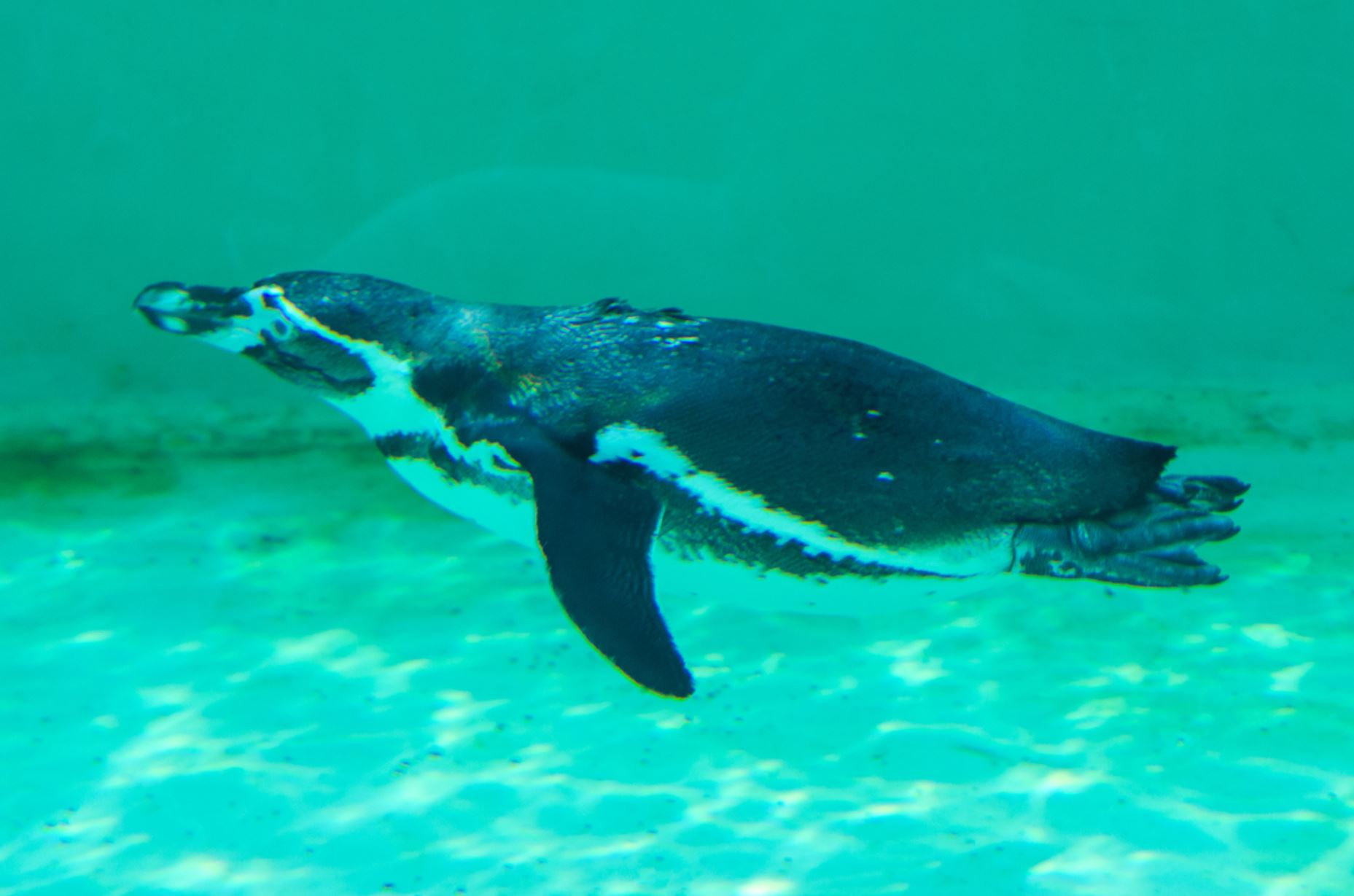Galapagos Green Turtle
Turtles are one of the most widespread species of marine turtle, found in tropical and subtropical waters throughout the globe. However, the Green Sea Turtle (Chelonia Mydas) is the only species of turtle that nests in the Galapagos Islands.Research has revealed that the nesting colony in the Galapagos is the largest in the East Pacific.
The Green Sea Turtle was so named because of the green colour of its body fat. The adult turtles algae diet is responsible for the colour in its tissues.
Green Sea Turtles body is wonderfully adapted to life in the ocean. Their shells are lighter and more streamlined than those of their terrestrial counterparts and their front and rear limbs have evolved into flippers making them efficient and graceful swimmers, capable of swimming long distances in a relatively short period of time. Green Sea Turtles have been known to move through the water as fast as 35 miles per hour. The Turtles sometimes emerge on to land to bask in the sun.
Green Sea Turtles are cold-bloodied. Adult green turtles are known to grow up to one and a half metres long. While individuals have been caught that reached weights of up to 315 kilograms (694 pounds), the average weight of mature individuals is around 200 kilograms (440 pounds). The largest Green Sea Turtle ever recorded weighed 395 kilograms (871 pounds).
The Green Sea Turtles shell is actually its skeleton. Unlike its cousin, the Tortoise, the Green Sea Turtle cannot retract its small head into its shell for protection from dangerous sea creatures.
Sea turtles have come up with an ingenious way to rid their bodies of the salts they accumulate from the seawater in which they live. Just behind each eye is a salt gland. Their salt glands help sea turtles to maintain a healthy water balance by shedding large ‘tears’ of excess salt. If a sea turtle appears to be ‘crying’ it is usually not cause for alarm, as the turtles are merely keeping their physiology in check. It is not because they are upset or sad.
Green Sea Turtles spend most of their life in the ocean. The males never leave the ocean, but the females come ashore to nest and lay eggs on several of the islands.
At night, the females dig pits on the sandy beach with their back flippers. They lay about 100 eggs and then they cover their pit. Green Sea Turtles leave the island and go back into the sea never returning to see their eggs. After the baby green sea turtles are about 6 months old, they start to eat algae and seaweed.
- Animal Group: Reptiles
- Scientific Name: Chelonia mydas
- Animal Average Size: 150 cm
- Animal Average Weight: 68 – 250 kg
Places where you may see this animal:
Santiago
Bartolomé
Santa Cruz
Santa Fé
Floreana
Pictures
Islands where you can see the animal with a little luck:
Santa Cruz
It is located on the center of the archipelago, the reason why it is the biggest human settlement, with a population of about 19 thousand people. This island is the most developed in terms of human population that started when one man was abandoned and survived in an old scientific settlement as the Course of the Tortoise tells. The highlands of Santa Cruz are one of the biggest green areas of the archipelago; therefore agricultural activities started on the early 40s and grew rapidly from there. The Charles Darwin Research Station was developed in town on 1959 and has allowed scientific research and conservation projects progress. In between the facilities there is the tortoise breeding center which objective is to rebuild an almost extinct population in Española island where only six individuals where remaining. Today, these efforts have restored the population to over one thousand individuals. Also named Indefatigable after the military British vessel,
The largest accessible lava tunnels. Underneath the ground hundreds of lava tunnels have been formed by different temperature kinds of lava flow. Some of these tubes are several kilometers long and even though most have collapsed with time and erosion, a couple of them are still there to be visited. They offer the visitor the chance to understand why the stories of pirates and treasures are related to these geological formations.
The biggest tortoises in accessible visitor site. The highlands of Santa Cruz have a big wild population of Tortoises, they walk freely around the private and National Park lands. In our visit to this area, one can notice the difference in size from these animals to others in other visiting sites. There are 15 subspecies of land tortoises in the Galapagos, 4 from which are extinct. They present two different tortoise shell shapes, the Saddleback and the Dome shape. Santa Cruz has tree tortoise subspecies that show both kinds of shells and allow visitors to notice the difference and once understand the evolutionary process that shaped them into this giant prehistoric like animals.
This island has six vegetation zones, each one very different to the others. The contrast of the arid or littoral zone located on the base of the island just a few meters from the ocean, and the scalesia and miconia zones, only to be found in San Cristobal and in this island at about 700 meters above sea level, is portrayed by the landscape and the ecosystems. One of the rarest bush forests stands in the center of the island, spread on top of the Twin Craters.
This island also has some of the largest mangrove areas, a very important ecosystem for all marine life and many terrestrial species. These zones are the nursery of most marine fish and shark.
Tortoises, lava tunnels, white-sand beaches and a picturesque modern town Puerto Ayora bring lift to one of Galapagos greenest, most tropical islands.
Visitor sites: Bachas Beach, Ballena Bay, Black turtle Cove, Carrion Point, Carrion Point Dive site, Charles Darwom Station, Dragon Hill, Eden Islet, El Chato Giant Tortoise Reserve, Hacienda Primicias Reserve, Village Puerto Ayora, Santa Cruz highlands, Tortuga Bay, Twin craters
Santiago
It has the biggest and longest lava flow, which is located in Sullivan Bay. Geologically speaking, this island is one of the most beautiful and unbelievable formations. The vast basaltic landscape performs smooth and unbroken surfaces with undulations and nods formed by the fluid lava that created the sculpture. It is located on the central west of the archipelago and is formed by two overlapping volcanoes. It is the 4th biggest of the archipelago.
It is an unpopulated island.
In Puerto Egas explore deep pools and caves carved from the lava shoreline, home to playful Galapagos fur seals as well as a variety of resident and migrant bird species.
Sombrero Chino offers a spectacular snorkel, swimming by a channel of shallow water, nursery of thousands of marine species and a small colony of penguins. Something to notice today in this island is the absence of the thousands of land iguanas that Charles Darwin mentioned on his diary. They completely disappeared due to the presence of introduced species; especially goats and rodents that today, are gone. This is the biggest island on earth where introduced animals were eradicated. Tortoises have the chance now to repopulate the island, and they can be seen more and more often in our visits.
Charles Darwin Journey on Santiago: This is the island where Darwin stayed the longest, he knew already that the islands were something bigger and more important than they seemed when he first arrived, so on his visit, he expend 2 weeks and walked the whole island. Here he first noticed the difference in between the tortoises from different islands, which had different shapes and sizes.
This is an amazing location featuring the remains of an eroded shoreline that is home to seabirds, fur seals, and playful sea lions. Its different shapes have been made throughout and erosion process of the salty waves and wind. Espumilla beach is a white-sandy front located in James Bay very popular among visitors.
Espumilla is a typical Ecuadorian dessert made of fruit and eggs which consistency is very similar to a foamy dessert which can also describe the foamy waves of this site. There are mangroves and a small palo santo forest that lead to salty lagoons that are home to wading birds such as flamingoes.
In the upper dunes, marine turtles nest can be also observed. The clear waters are a great place to snorkel to see assorted fish and rays.
Activities: 1 hour hike / 45 min beach snorkeling
Highlights: Volcanic black beach and wonderful landscapes, fur seal grottos, sea lion colonies, herons, hawks, oystercatchers, finches, doves, white-tipped sharks, sea turtles. We will be able to see the vegetation from arid to humid climate zones, but they have been seriously affected by intensive foraging by introduced goats, now eradicated. The surrounding area is a prime place for spotting and observing hunting herons-namely Great Blue Herons, Yellow-crowned Night Herons, and Lava Herons- as well as oystercatchers. Visitors will enjoy the sight of marine iguanas grazing upon algae beds at low tide, sharing space with the crimps on red Sally light-foot crabs and other wading birds.Visitor sites: Albany islet, Buccaneer Cove, Chinese Hat, Cousin Rock, Egas Port, Espumilla Beach, James Bay, Salt mine Volcano, Sullivan Bay
Floreana
The first successfully populated island is located on the south east of the archipelago, and is formed by several eroded mountains. Today, less than 200 people populate the island.
Island of mystery. This island witnessed the visit of many sailors, whale hunters and many other adventurers that reached it in search of water, tortoises and even isolation. The dramatic story of the Baroness had place on its beaches and lagoon, and many travelers still today hear from strange events that took place here.
Post Office Bay: the messaging system of the pirates. This island still has a mailing system that was used back in the day by sailors and others that still today receive letters and post cards to be sent to all destinations by visitors that come to the location and leave one of their own.
This Island has very unique ecosystems all very different from each other that can be visited. The singular kinds of beach of different colors, the green and the white one, and the fresh water lagoon where flamingos can be observed during the hot season, gives this island a special place in the archipelago. Marine Turtles nesting, Sea Lions, and Blue-Footed Boobies are some of the highlights of the visit. On this location most flora and fauna are endemic even though there has been a populated town since 1832.
Charles Dawin Journey on Floreana. In this island, Darwin collects the Floreana Mockingbird, later to realize the difference in between the four species to be found in the archipelago and understand a pattern of evolution due to the adaptation differences from each other
Animals: Flamingos, red billed tropicbids, herons, hawks,turtles, sharks, stingrays
Plants: Scalesia Villosa, Lecocarpus Pinnatifidus, Nolana, Sea Grape.
Visitor sites:
Asilo de la Paz, Baroness View Point, Champion islet, Cormorant Point, Devils Crown, La Loberia, Post office Bay, Puerto Velasco Ibarra
Santa Fé
The oldest island of all (4.5 million years), is the result of the uplifting of a layer that previously suffered geological folding even tough recent data suggests it has also had volcanic origins. This island is a very rare formation located in the middle of Santa Cruz and San Cristobal islands, on the south east of the archipelago and it holds a beautiful turquoise lagoon on its bay, an often visited historic anchoring point. It was called Barrington because of the Brithish Admiral.
It is an unpopulated island.
The island with the highest endemism. Due to is geological nature and age; most of the animals on this island are endemic to this only location. Here the Marine Iguana of Santa Fe can be found as well as the Santa Fe Mockingbird, the Santa Fe rice Rat and the Santa Fe lizard.
Animals: frigate birds, blue footed boobies, sea lions, marine iguanas, swallow-tailed gulls, snakes, herons, hawks, sharks, rays.
Plants: giant cactus.
Offering one of the most beautiful and sheltered coves in the islands, home to a number of endemic species including Galapagos Hawk, Darwin’s finches and endemic land iguana.
Visitor sites:
The visitor site Santa Fe is located on the northeast end of the island bearing the same name. We continue walking through an endemic cactus forest as we search for the endemic Santa Fe land iguana, which is the largest in the islands and distinctively paler, and sea lions.
This island is home to a number of endemic species including Galapagos hawk, Galapagos snake, a variety of finches and one of the four species of Galapagos mockingbirds.
Activities: 1 hour 30 min walk / 1 hour deep-water snorkeling
Highlights: Santa Fe land iguana unique in Galapagos, largest cactus of the archipelago.
Bartolomé
Bartolomé Island is one of the smaller and geologically younger in the Galápagos Islands. It is located slightly east of Santiago (also called San Salvador or James Island) and has a size of 1.2 km². It is named after Sir Bartholomew James Sulivan of the Royal Navy. The highest point on the island is 114 meters. Special attractions are the beaches, the Pinnacle Rock, , which can often be seen in photos of Galápagos, as well as Galápagos penguins and fish stocks.
Most important point of visit: 114 meter high hill with a fantastic view and a very beautiful beach with a view of Pinnacle Rock
Mr. Frobeen can give you precise information about the ships.
Mr. Frobeen will be happy to advise you by phone at +49 (0)7633 9399360 or via email info@frobeen.de
If you want to book, what are the payment methods?
The reservation is gratis as an option.
If you want to make an fixed booking, there is to pay a deposit of 20%.
The remaining payment is due 4 weeks before departure. In individual cases, such as diving cruises, other rules apply. Information on request.
- Your payments are insured against bankruptcy!

